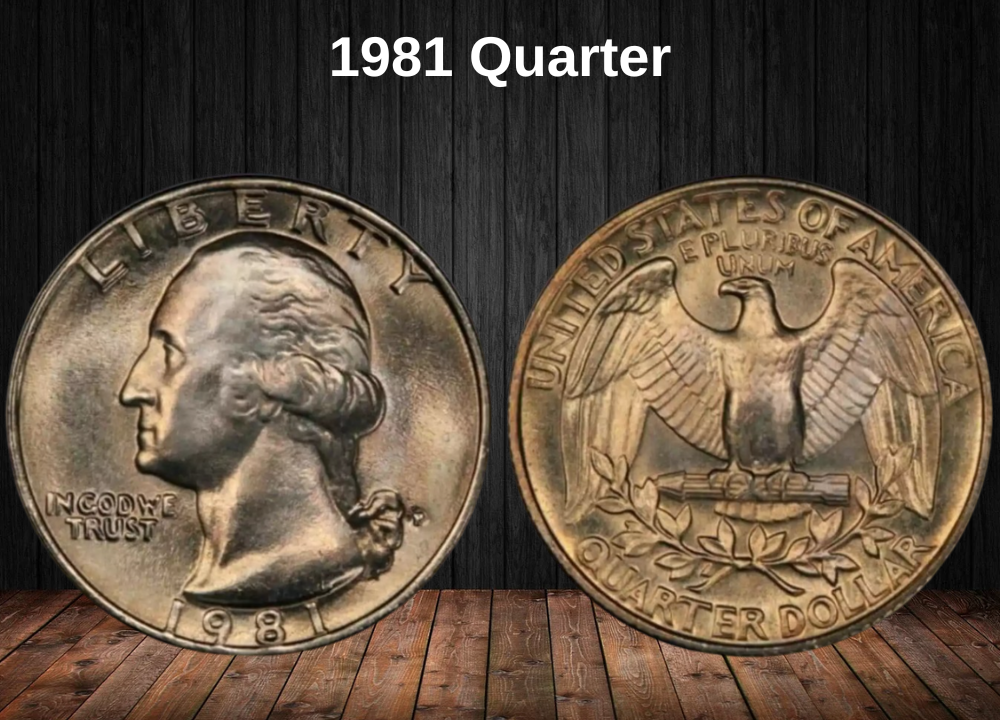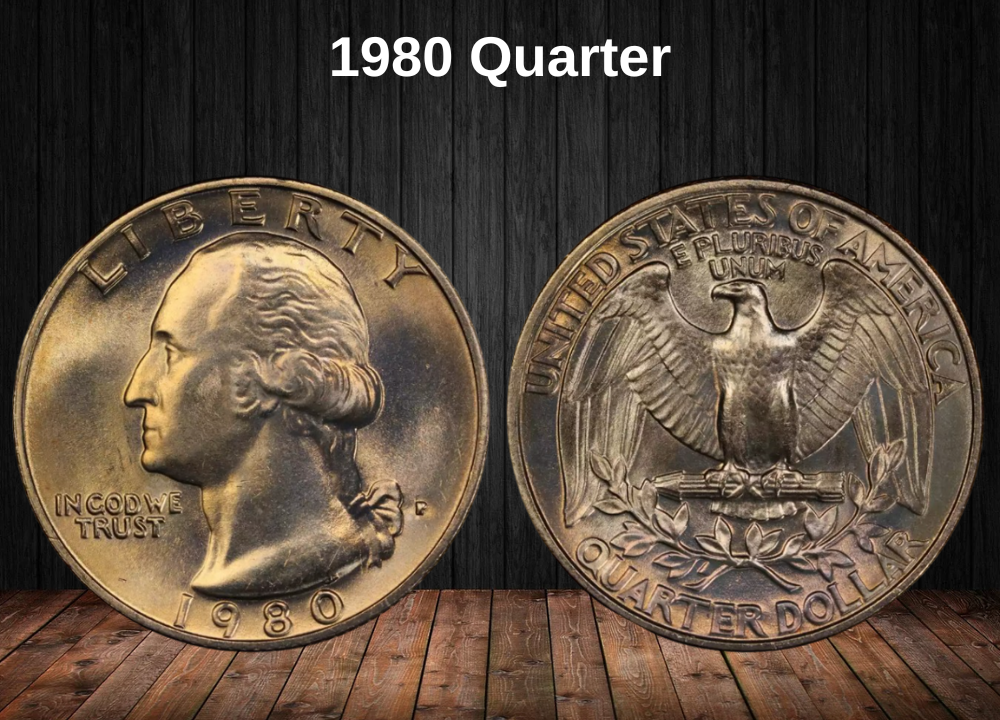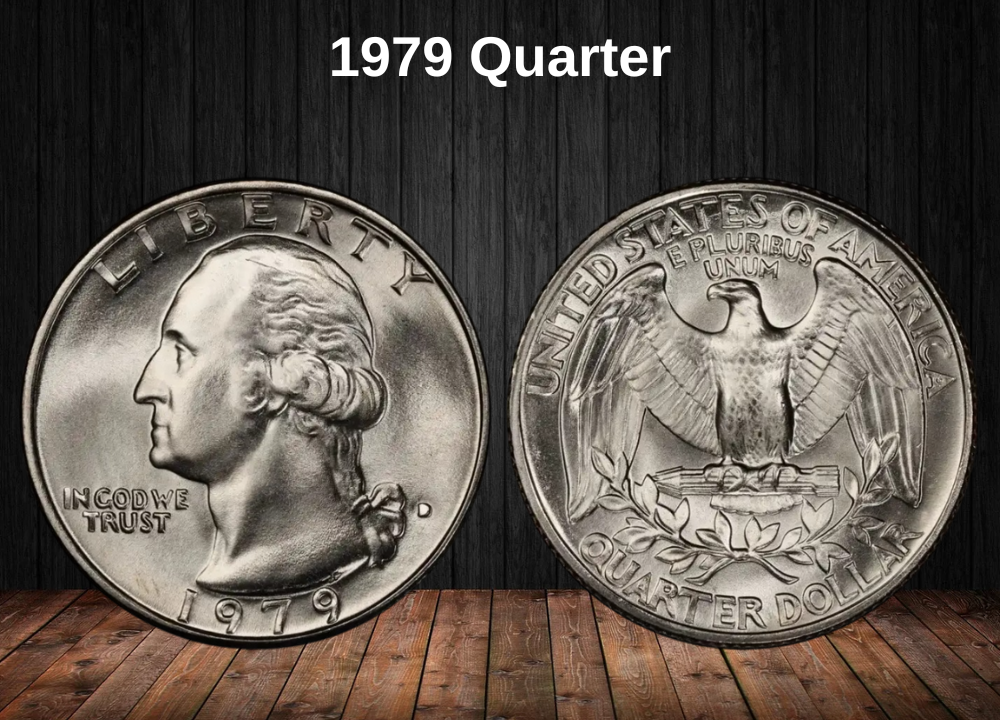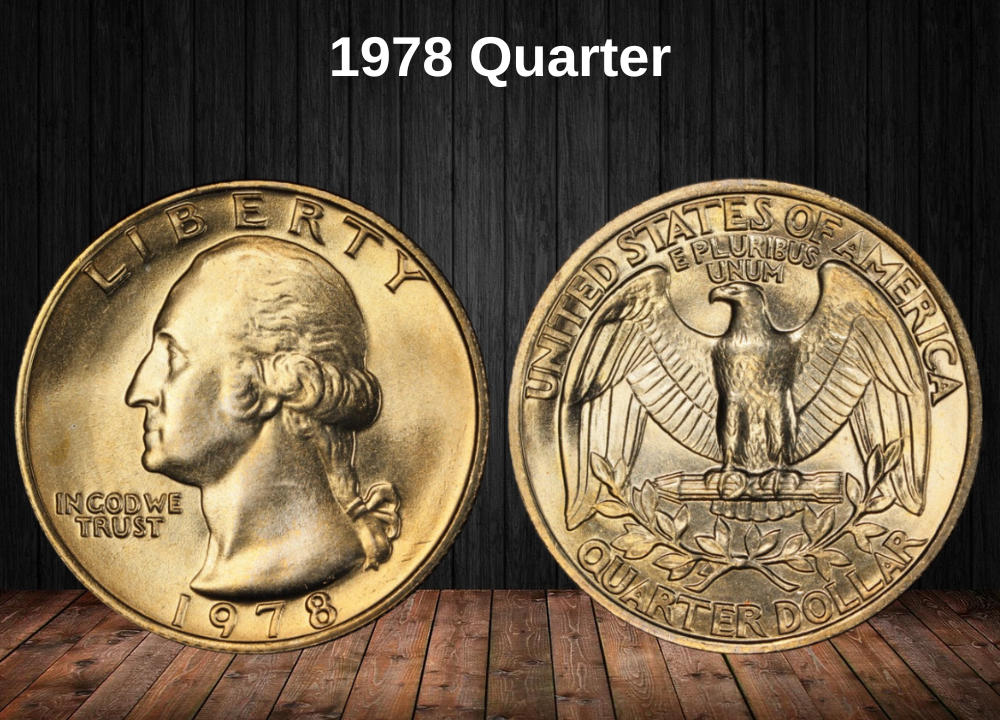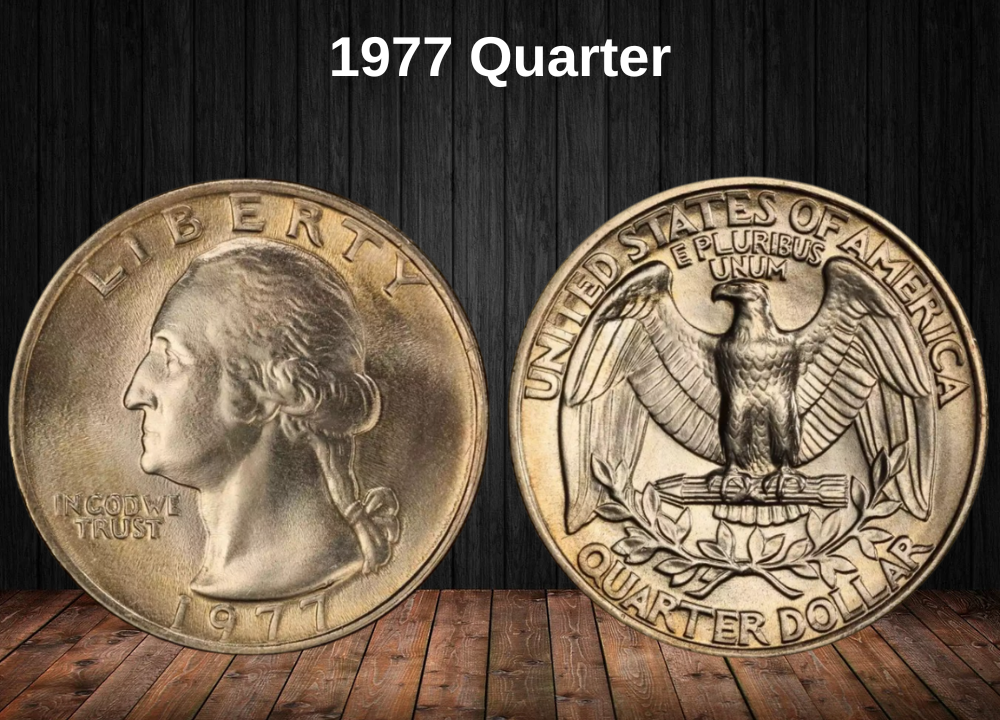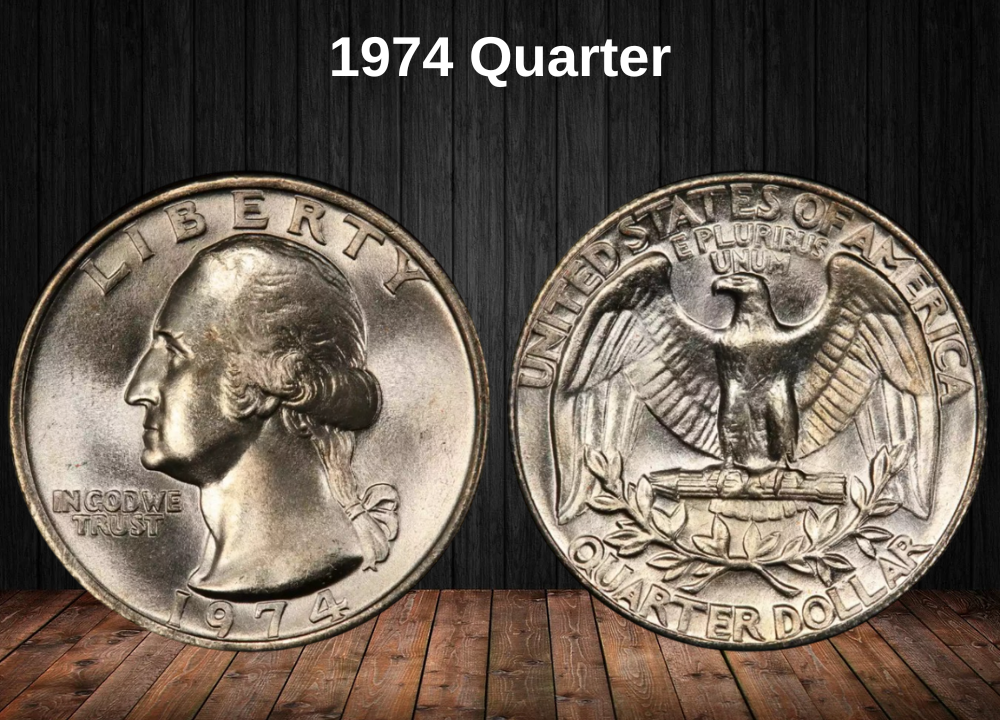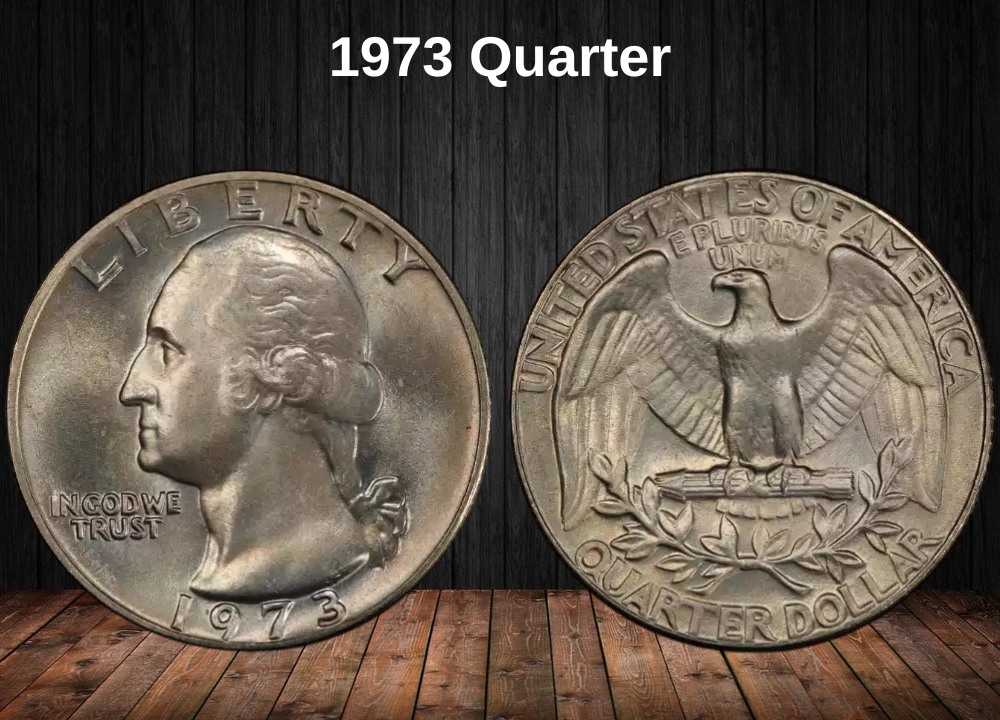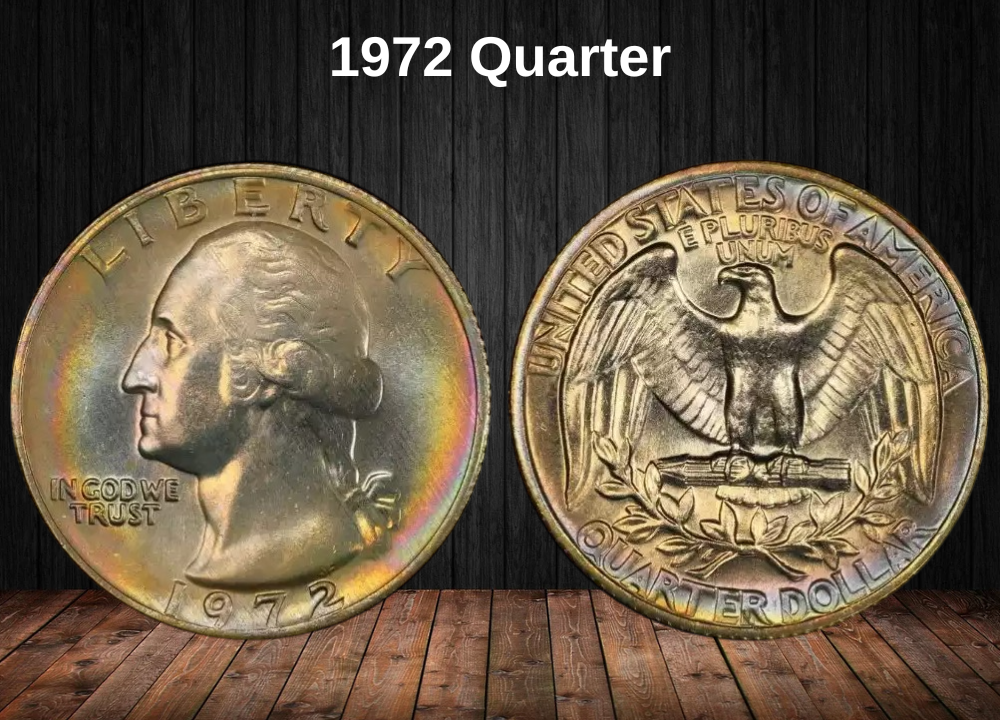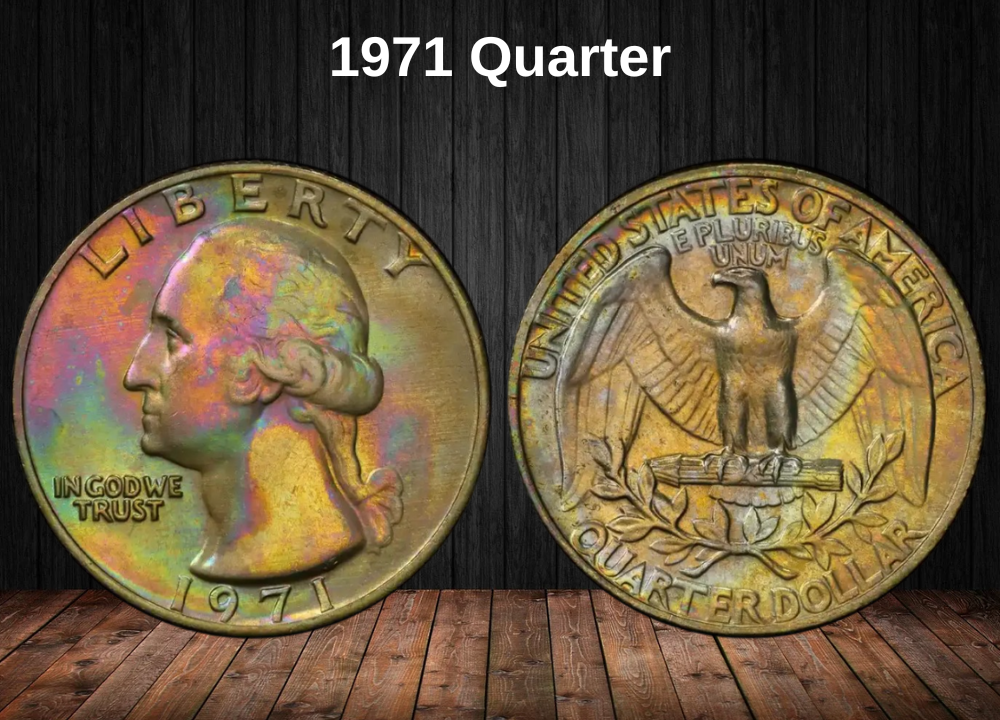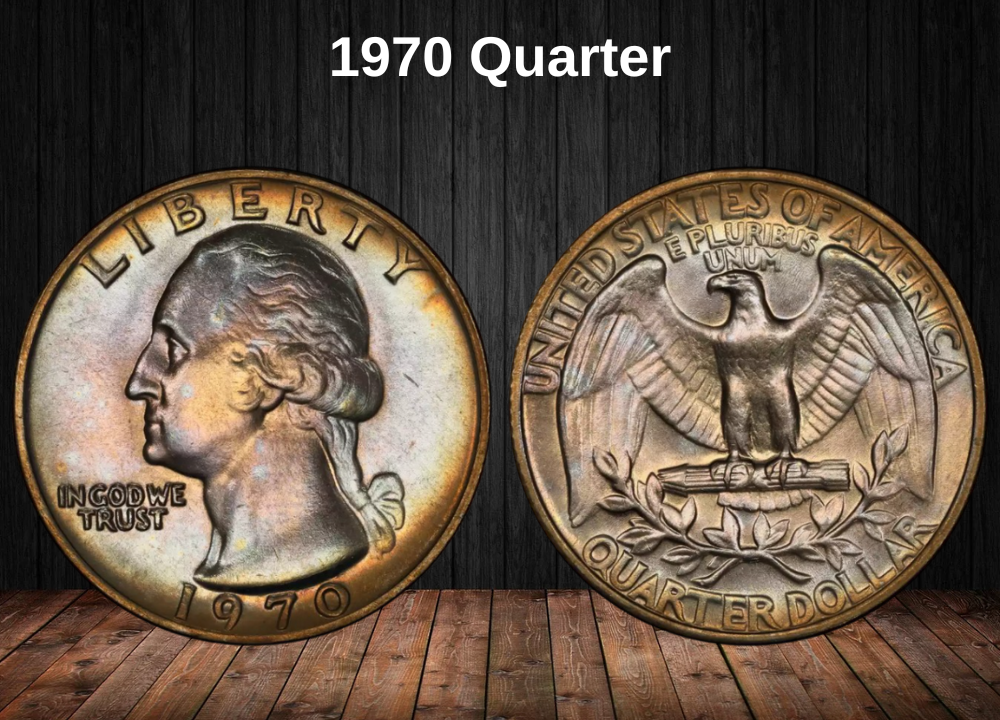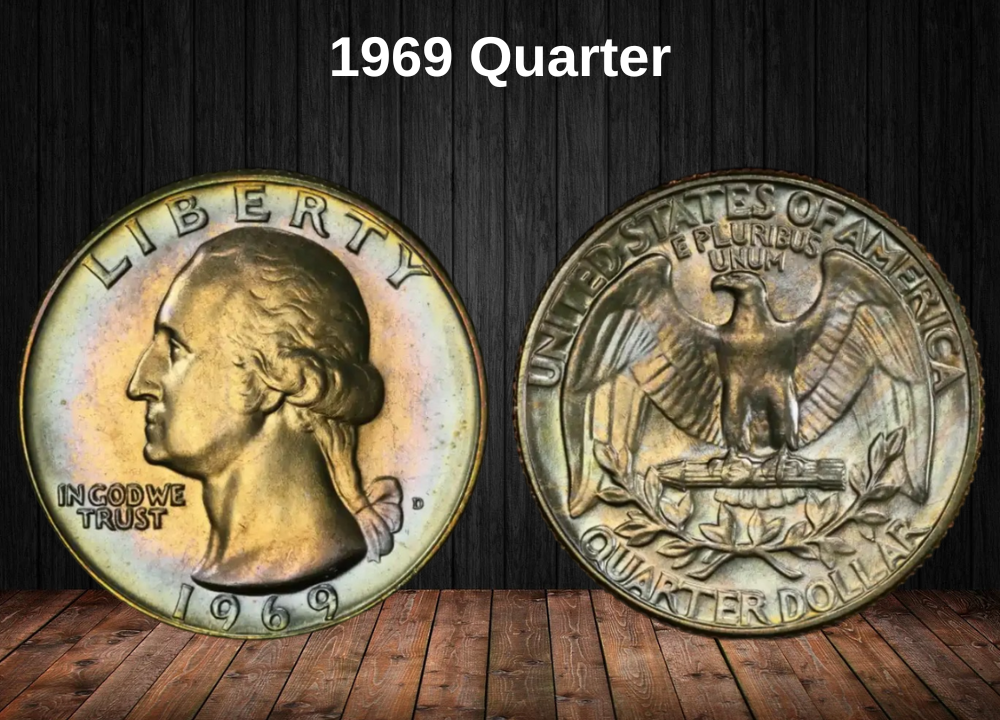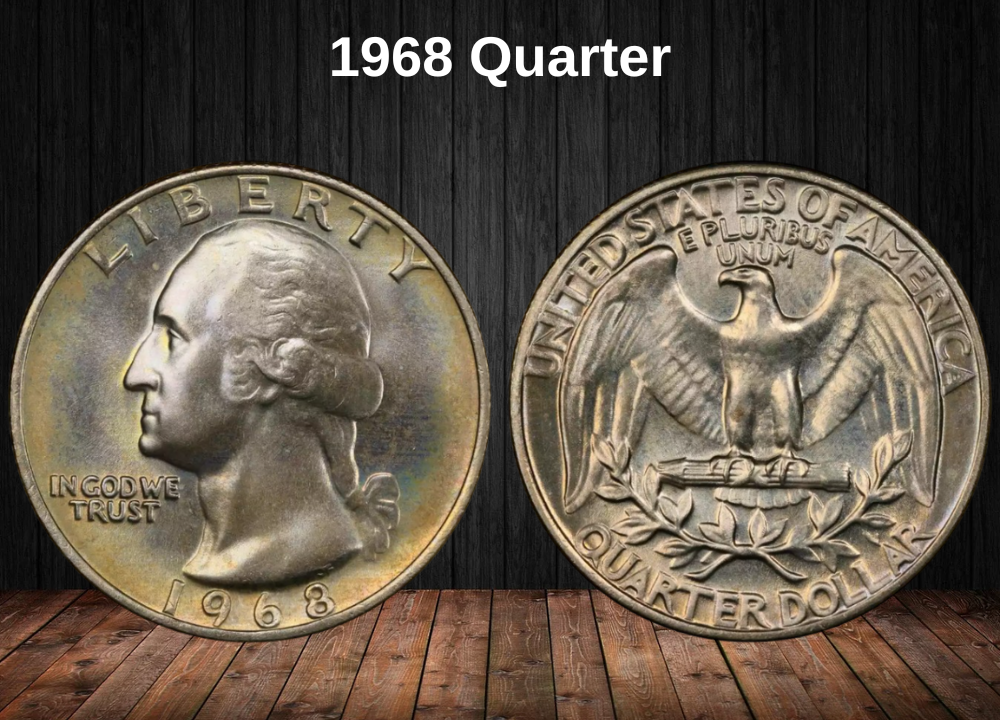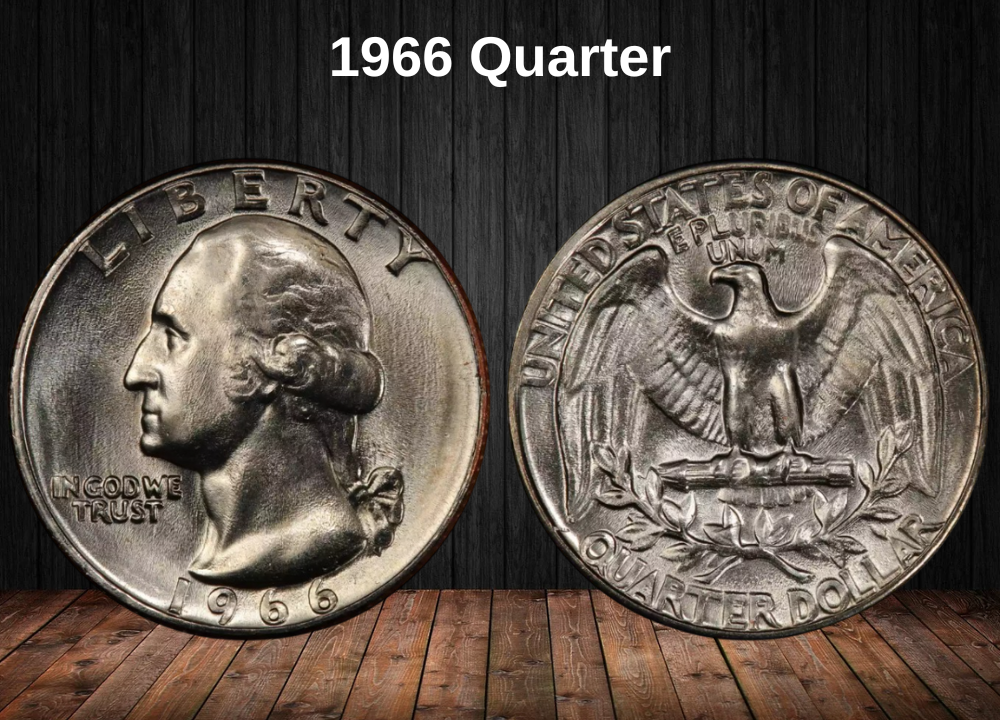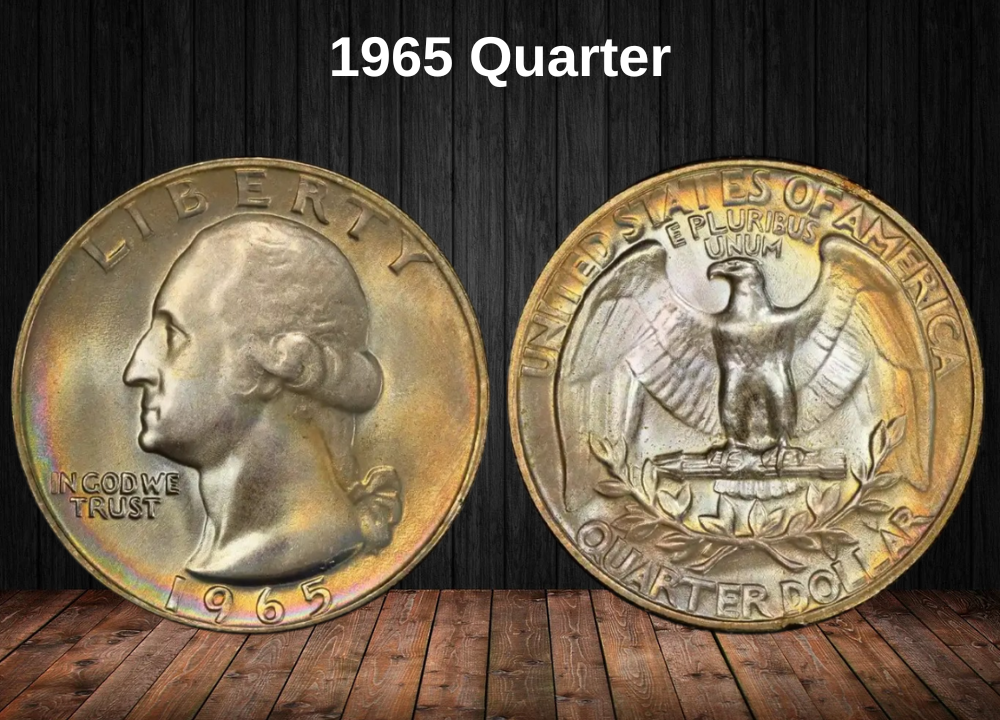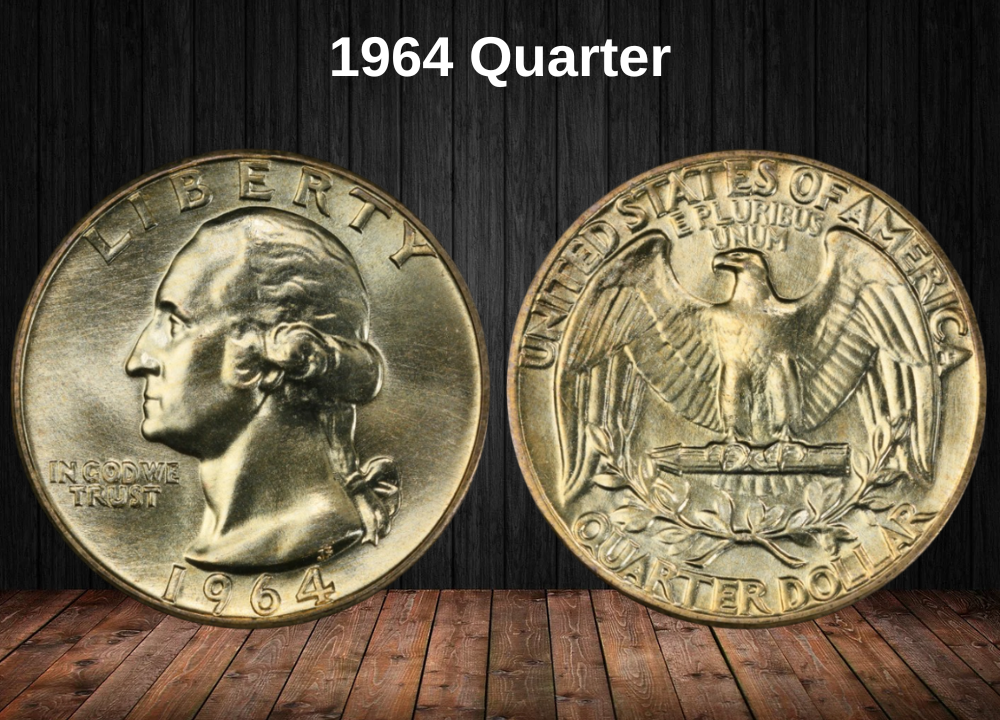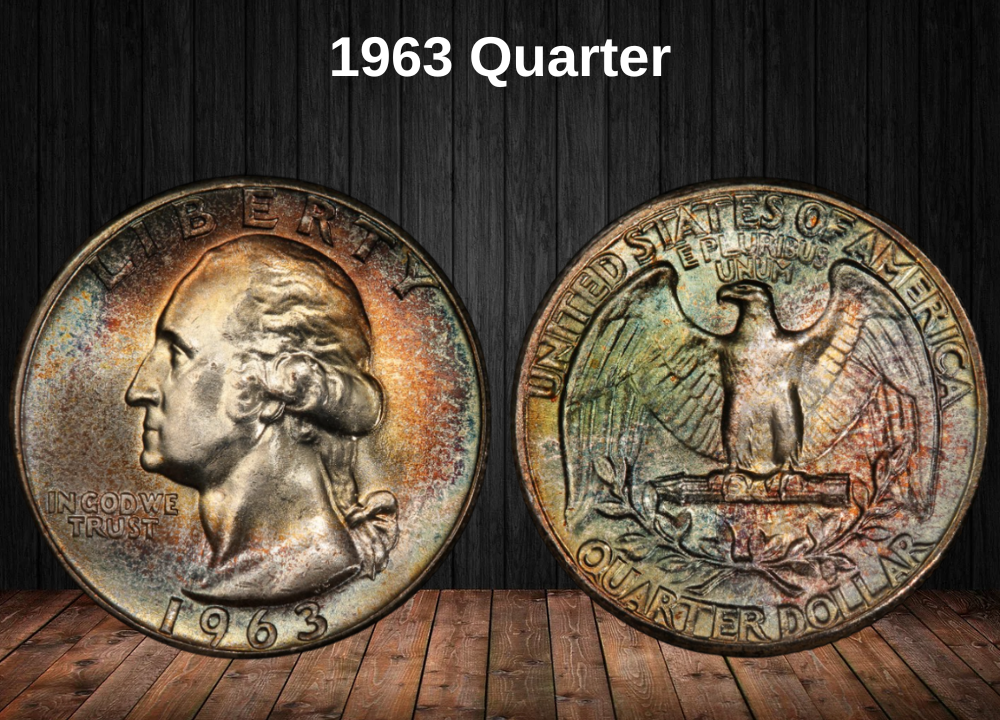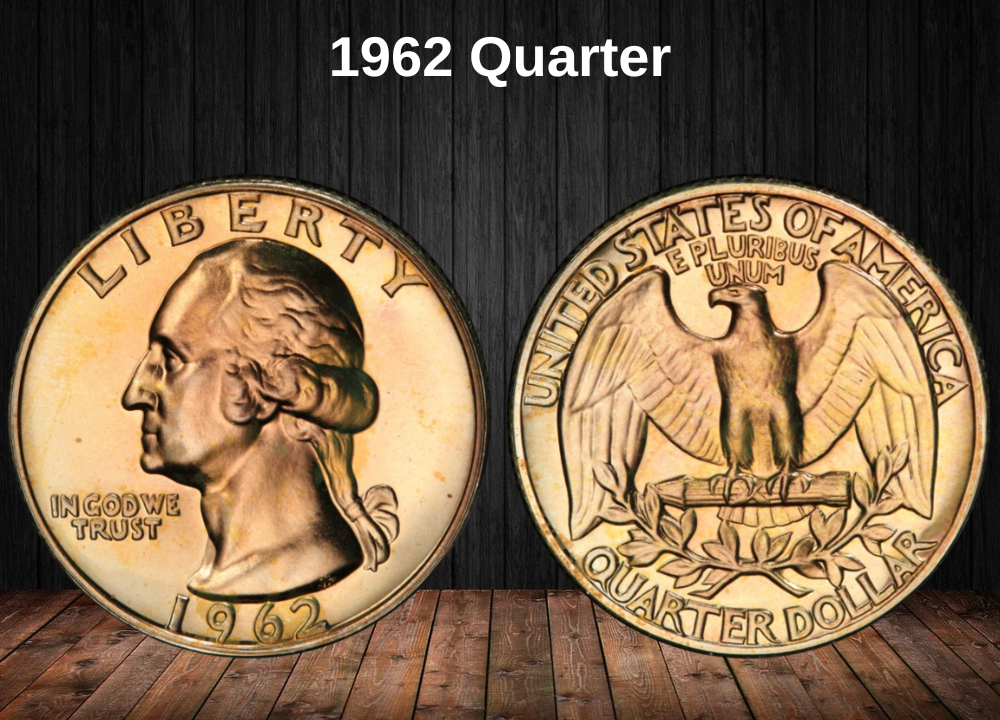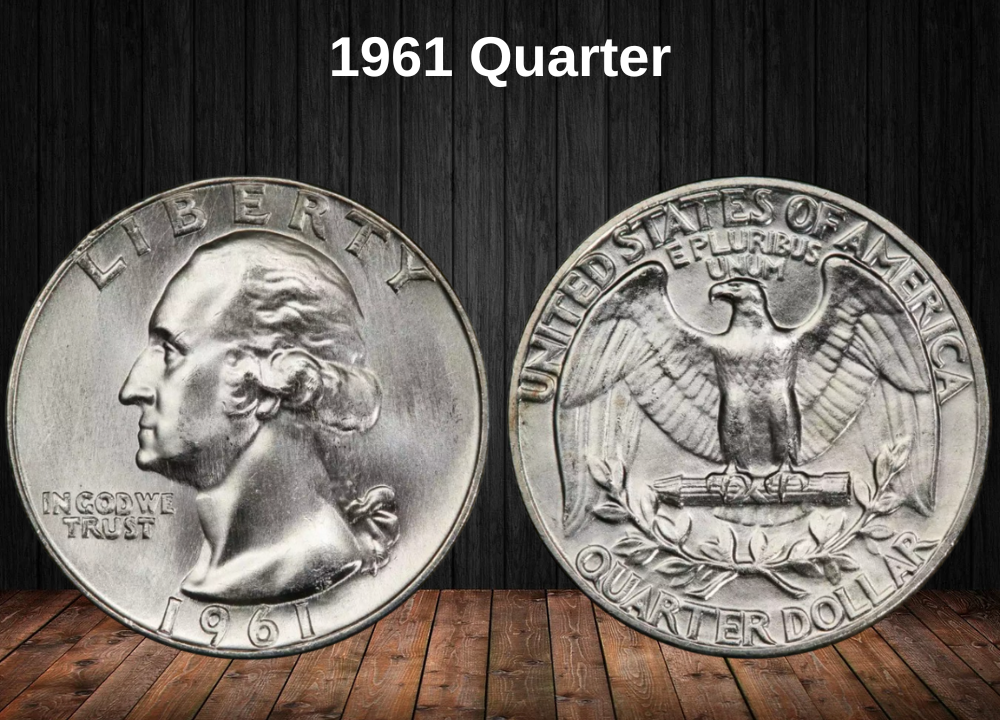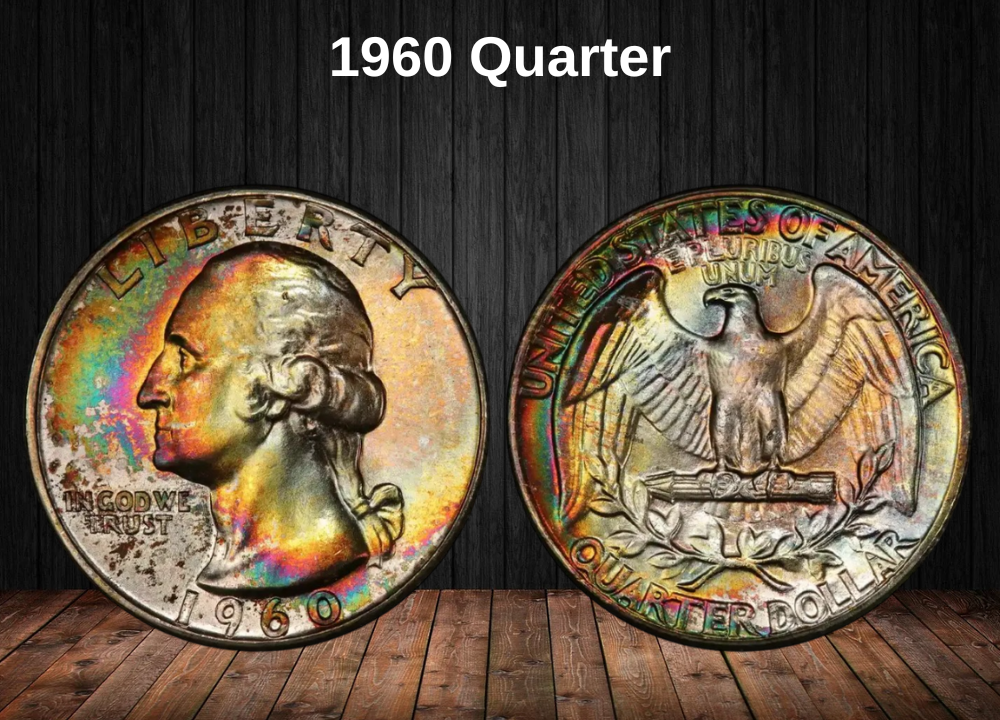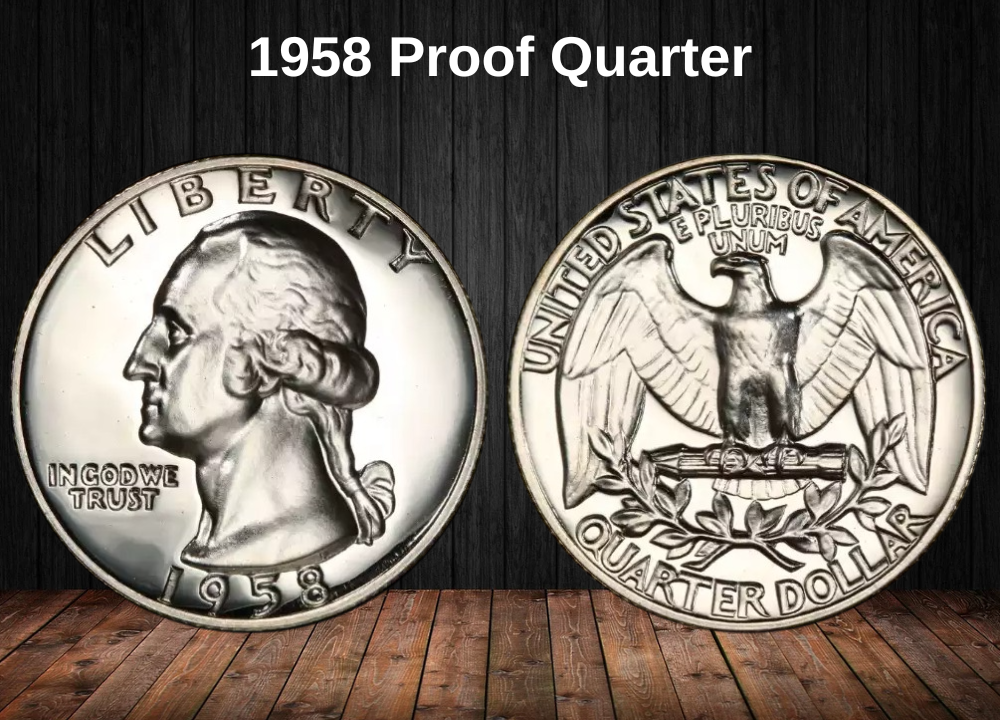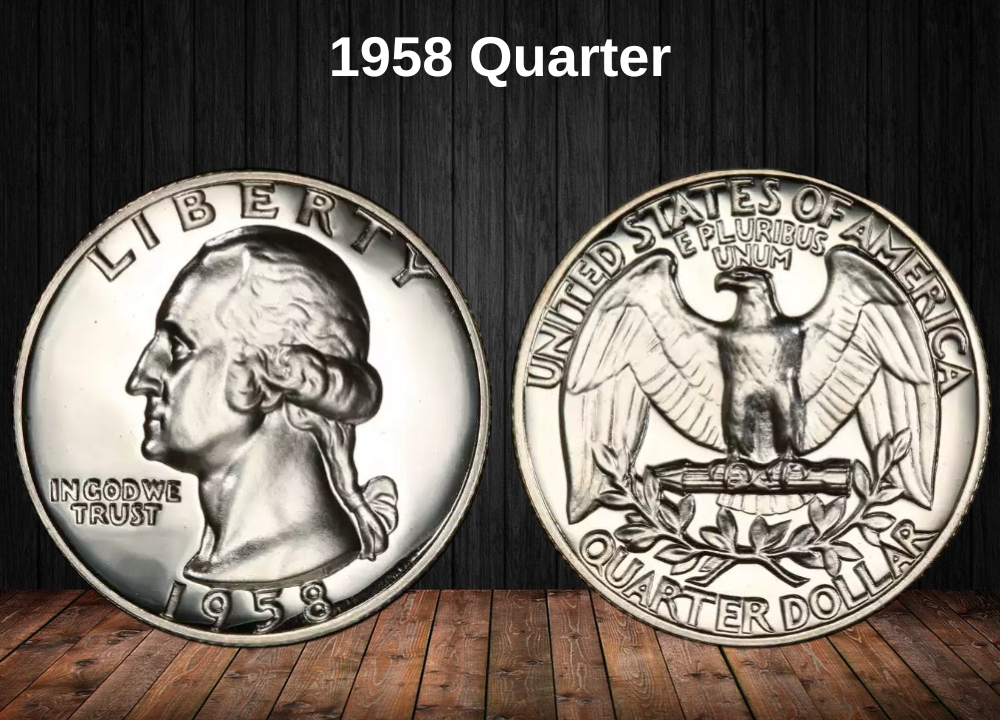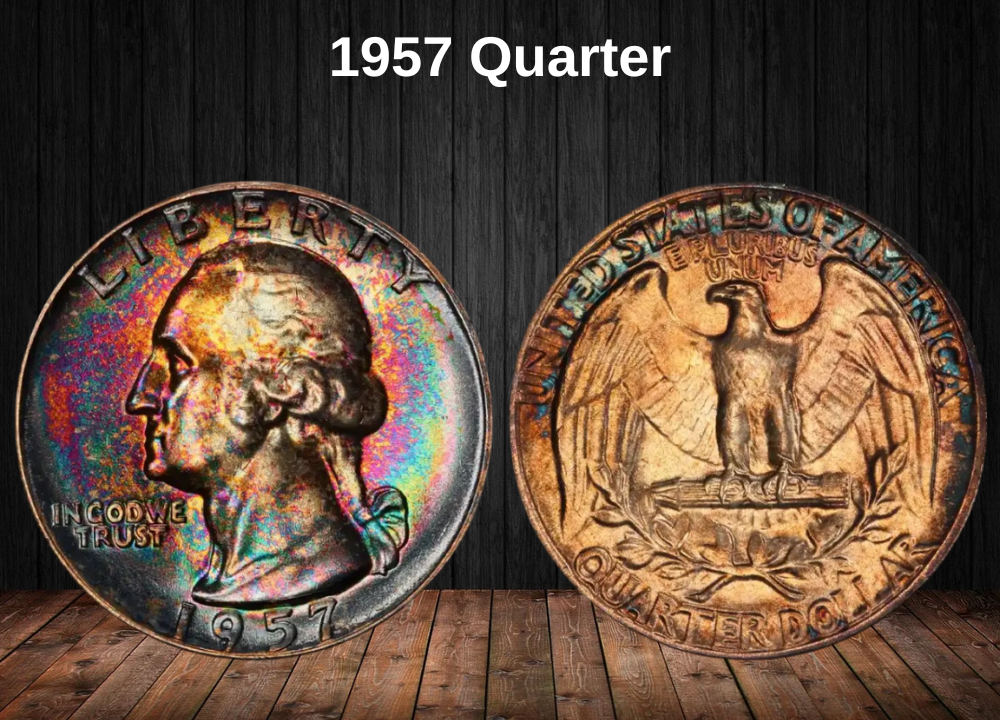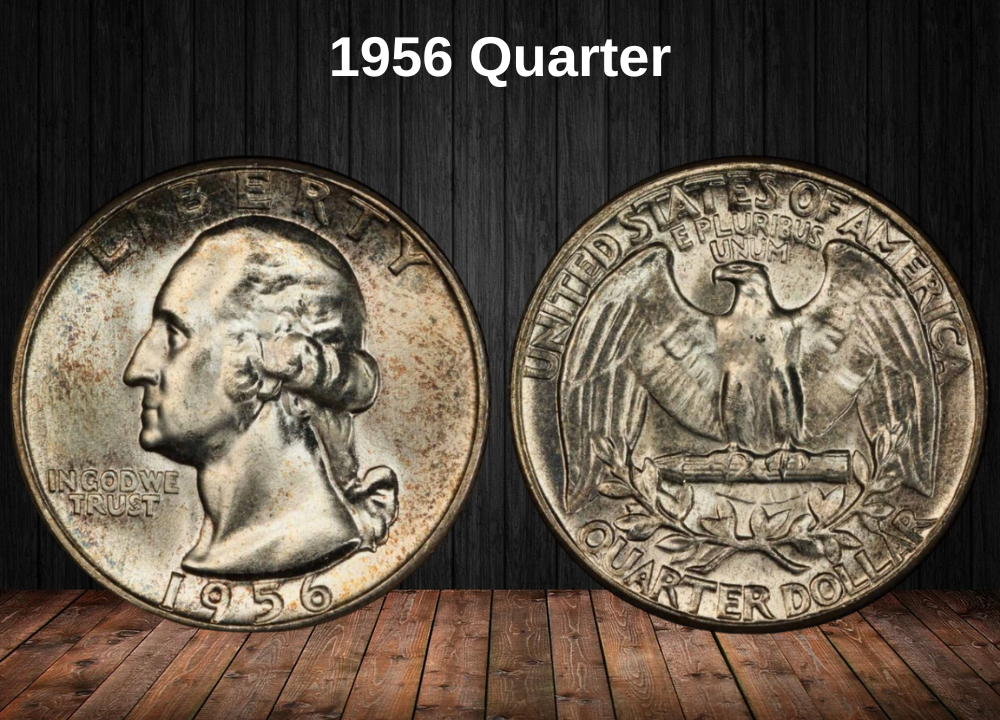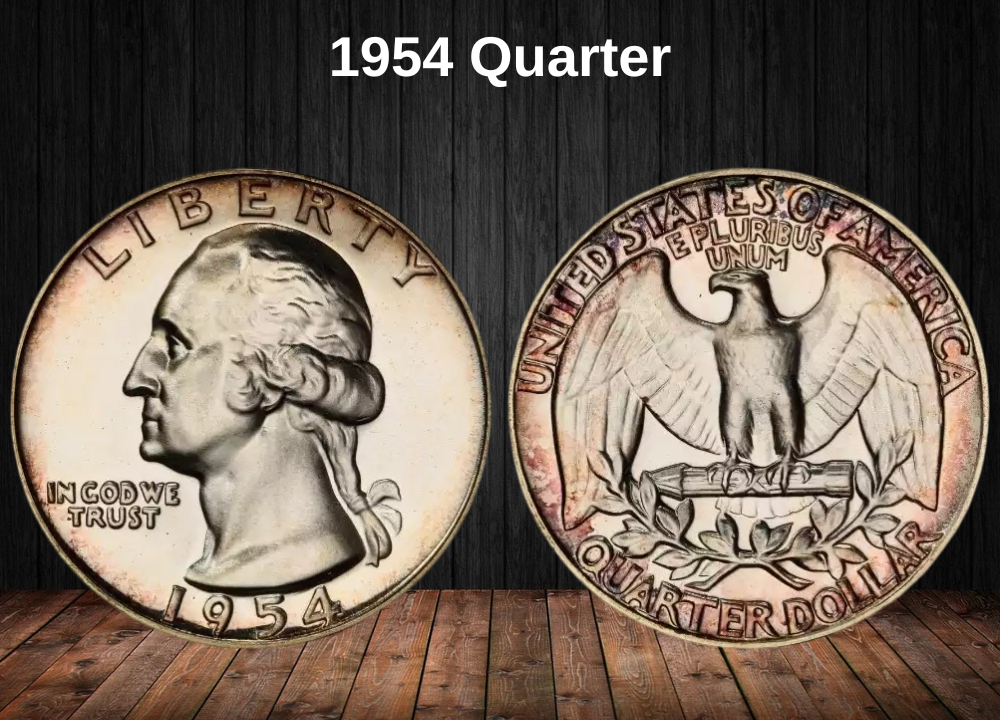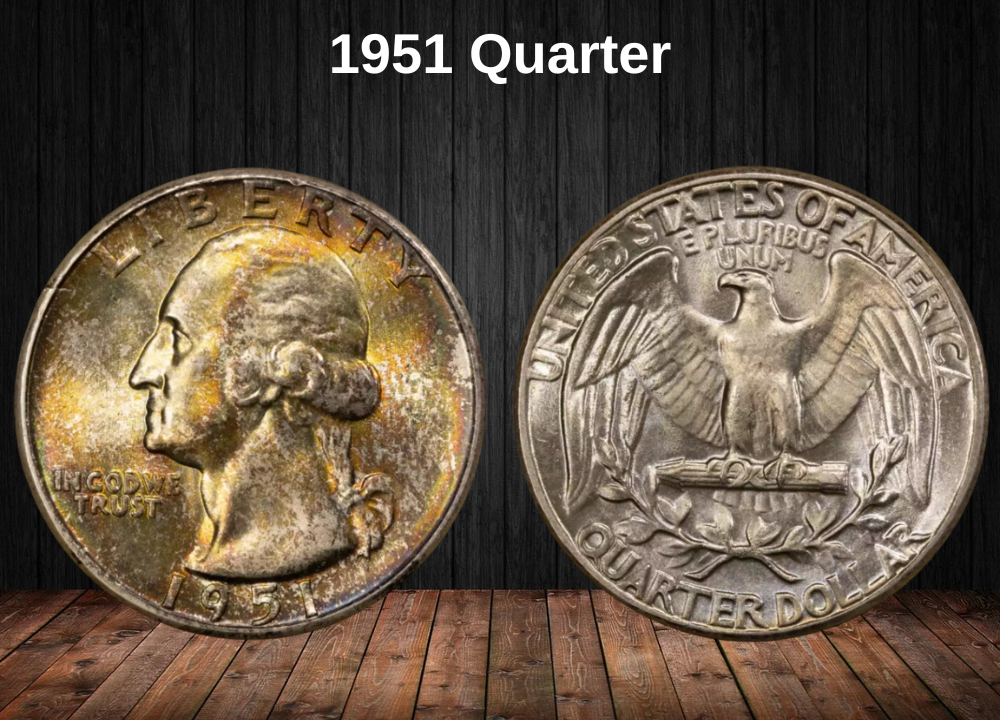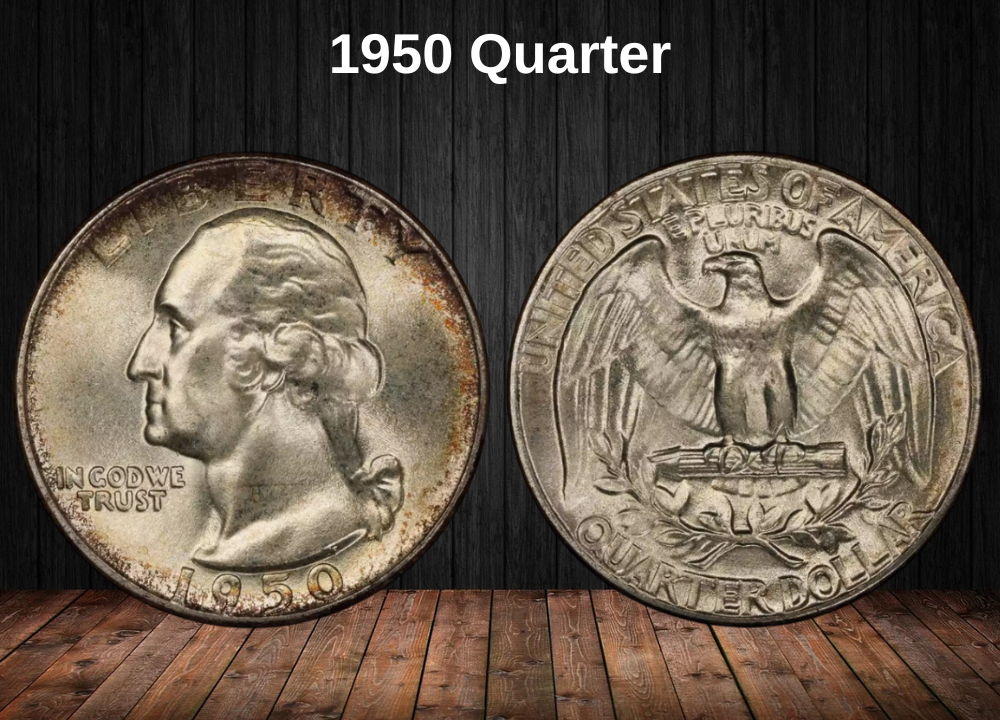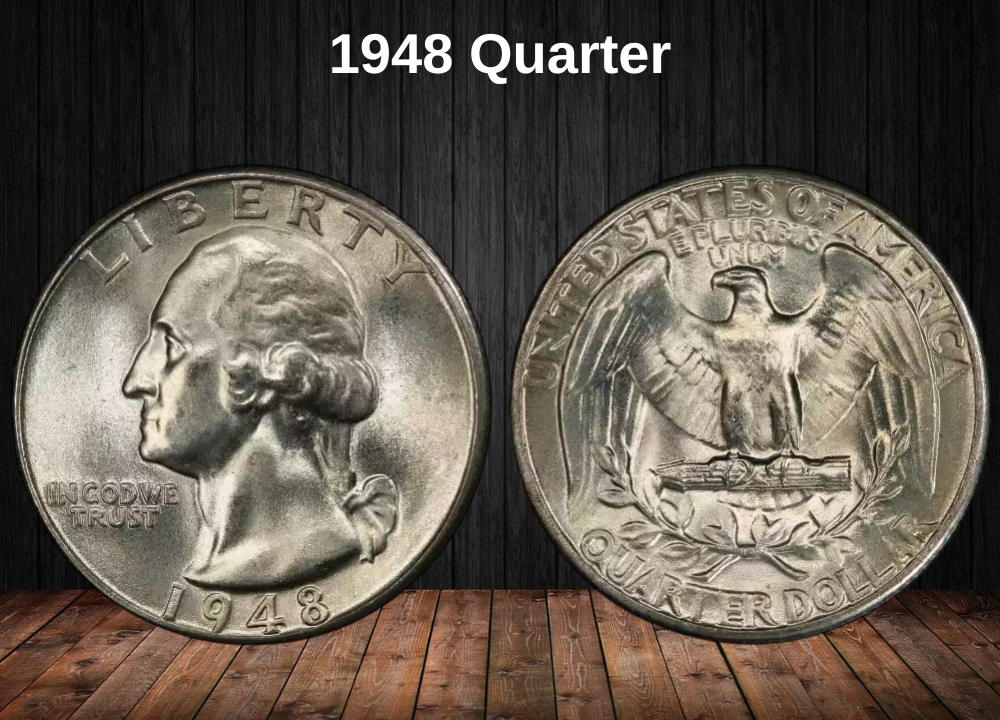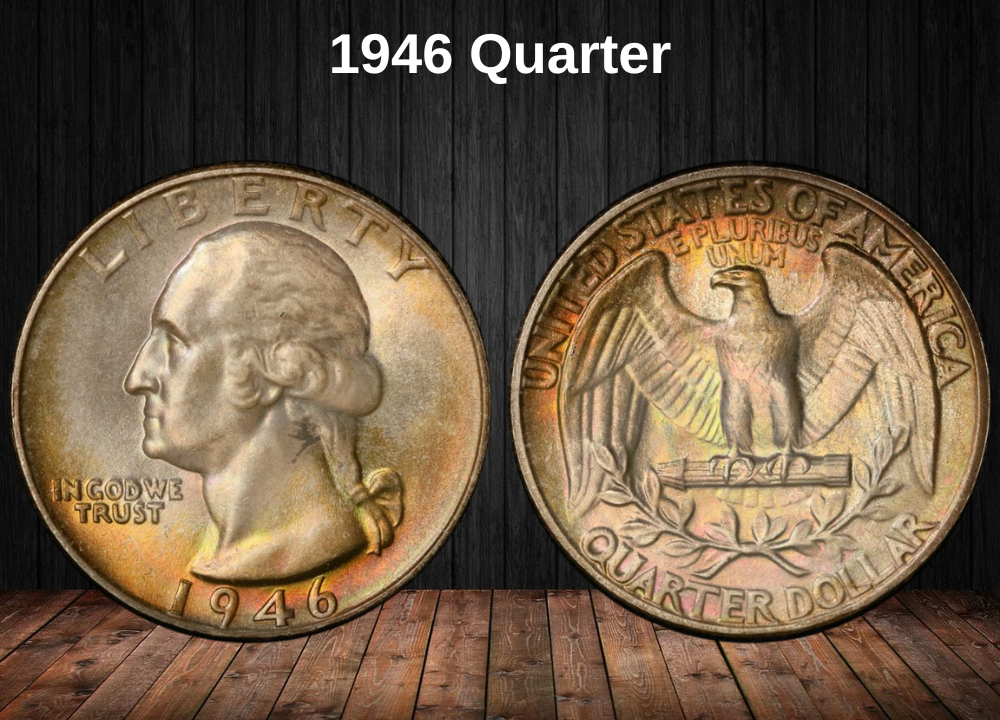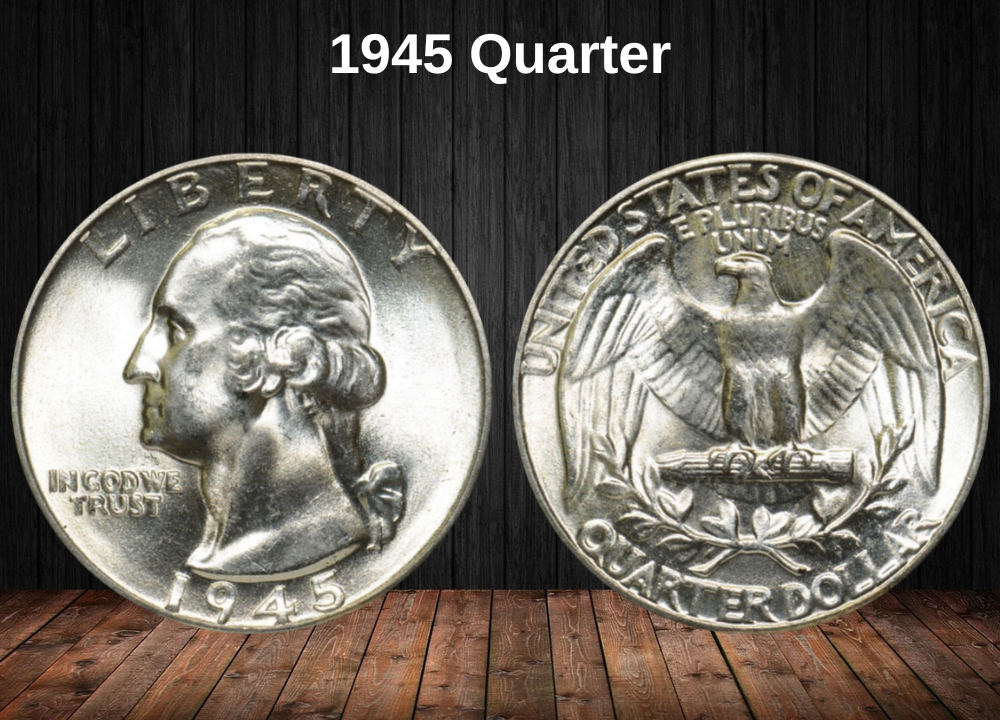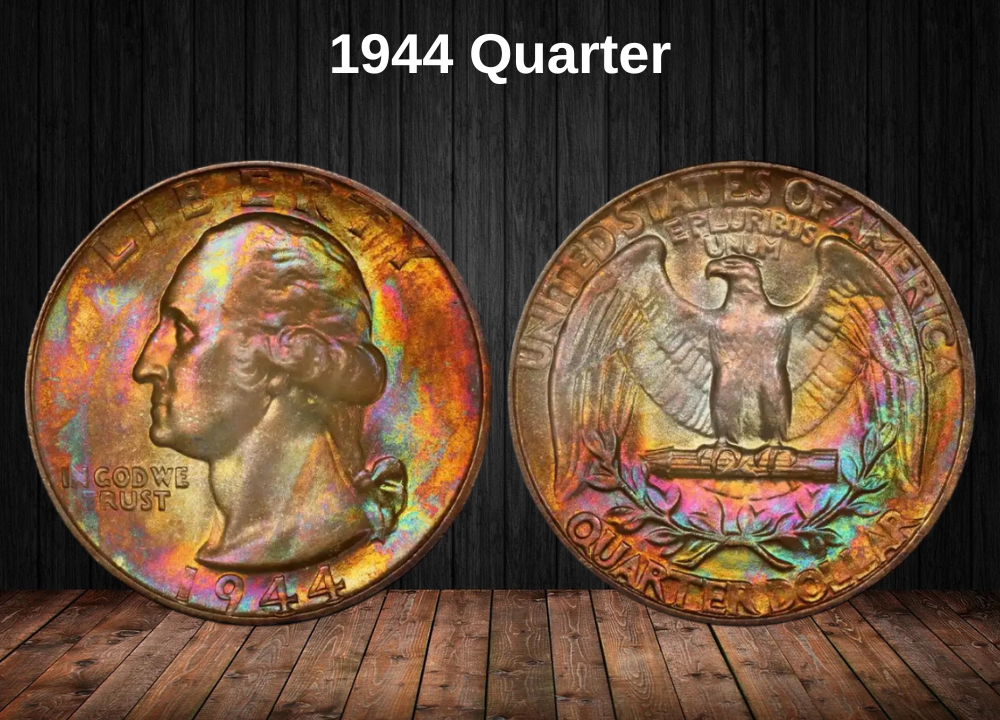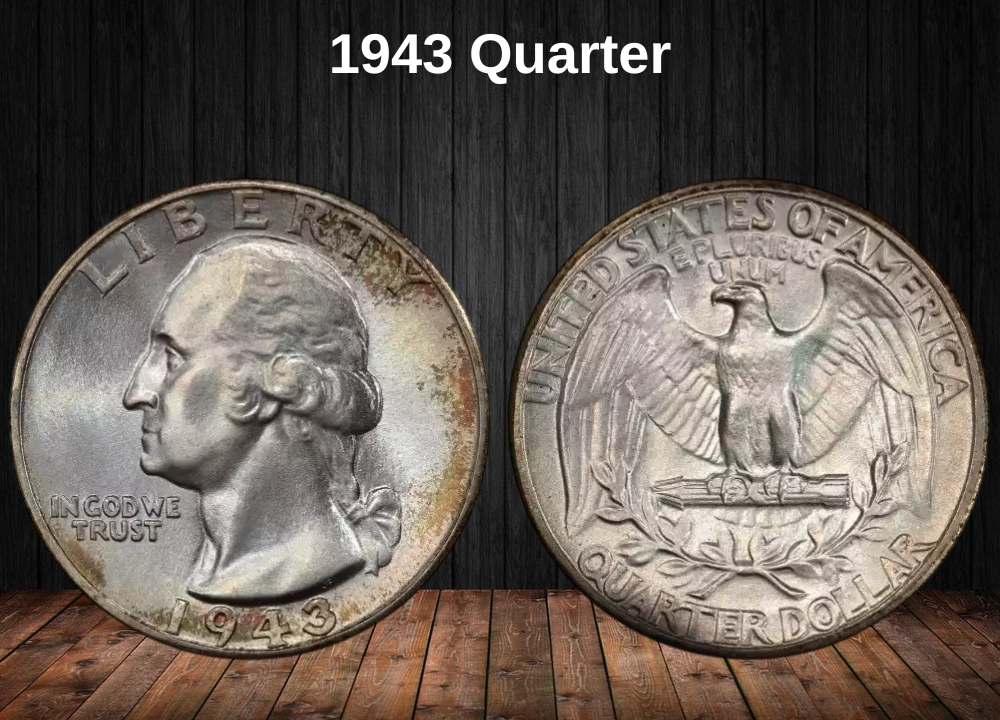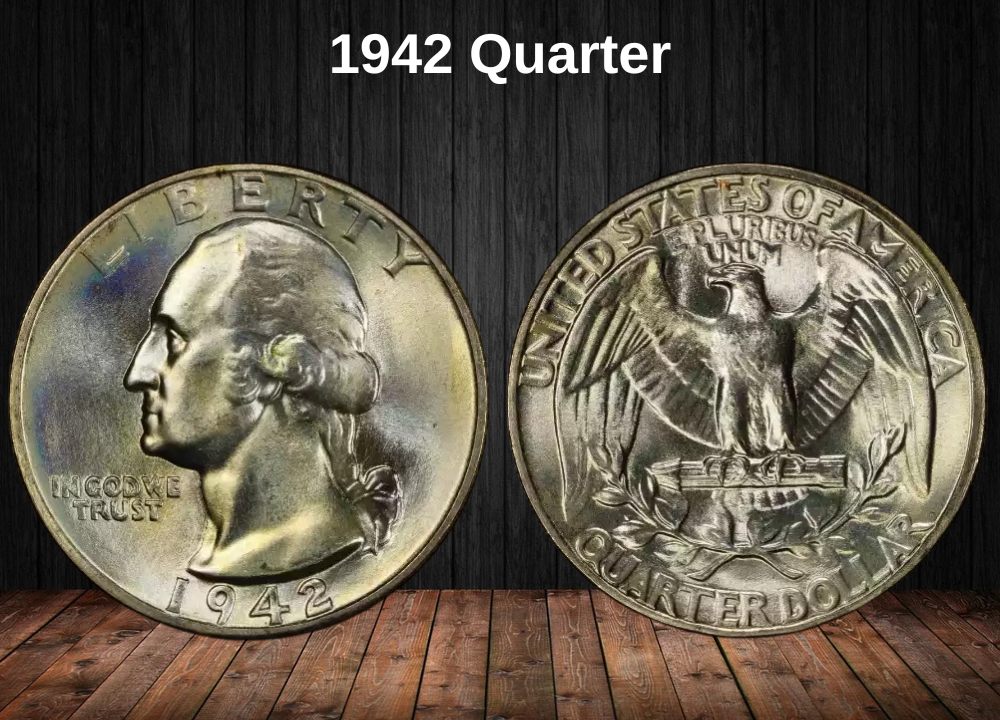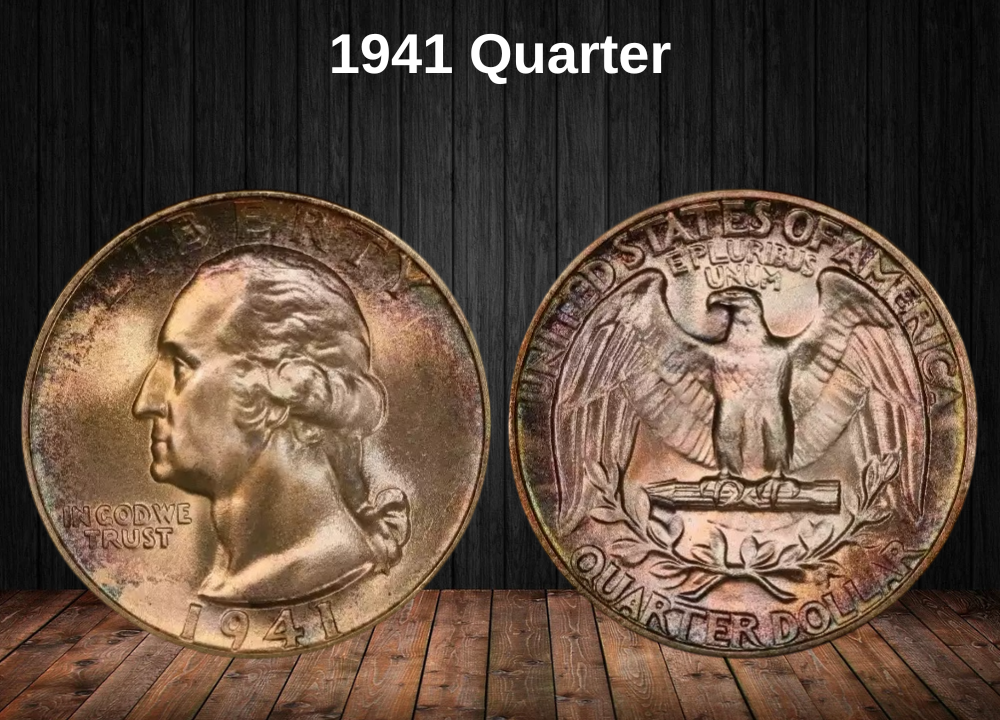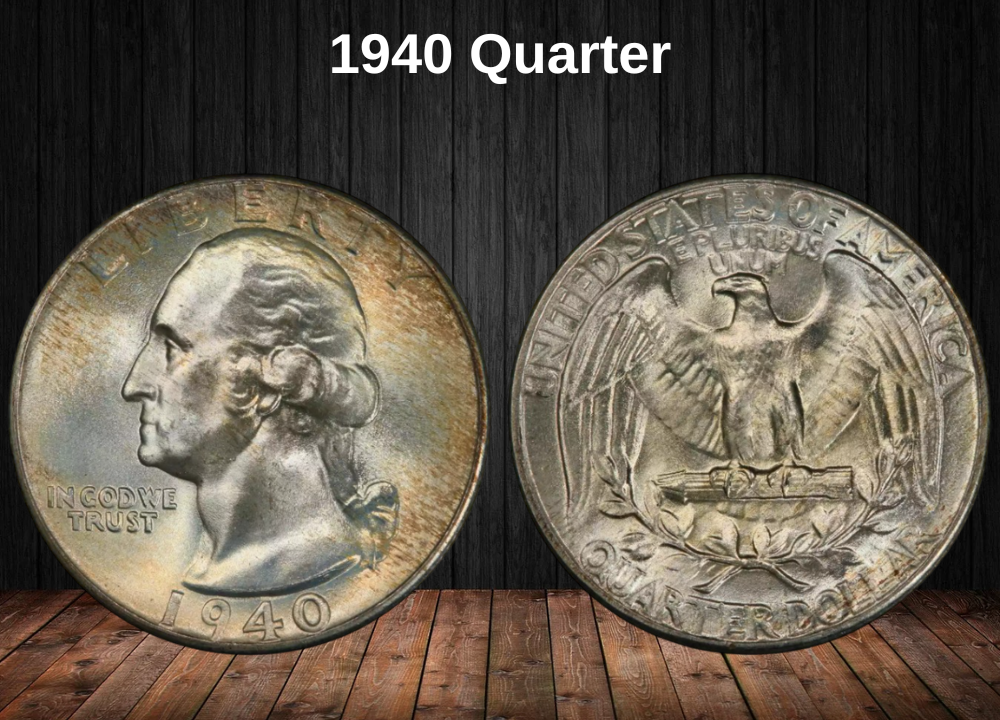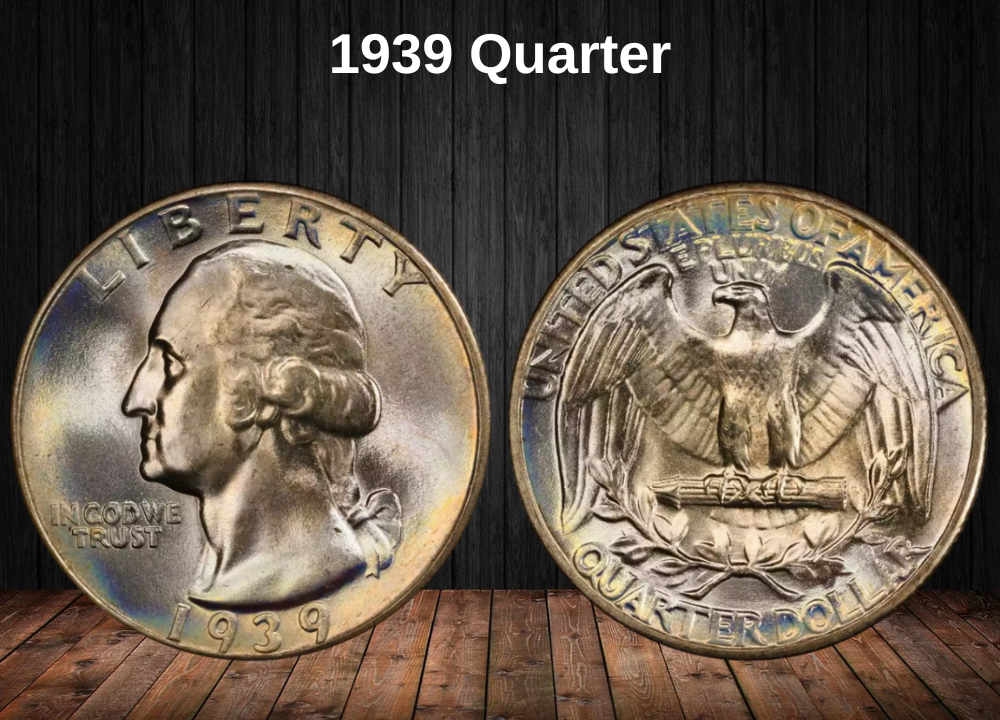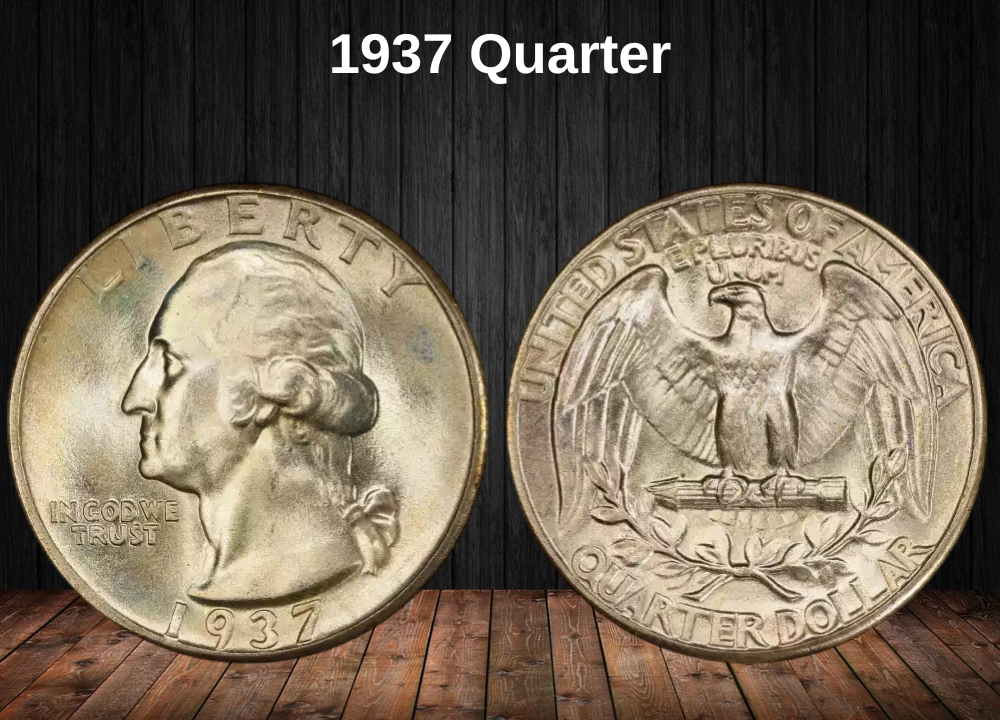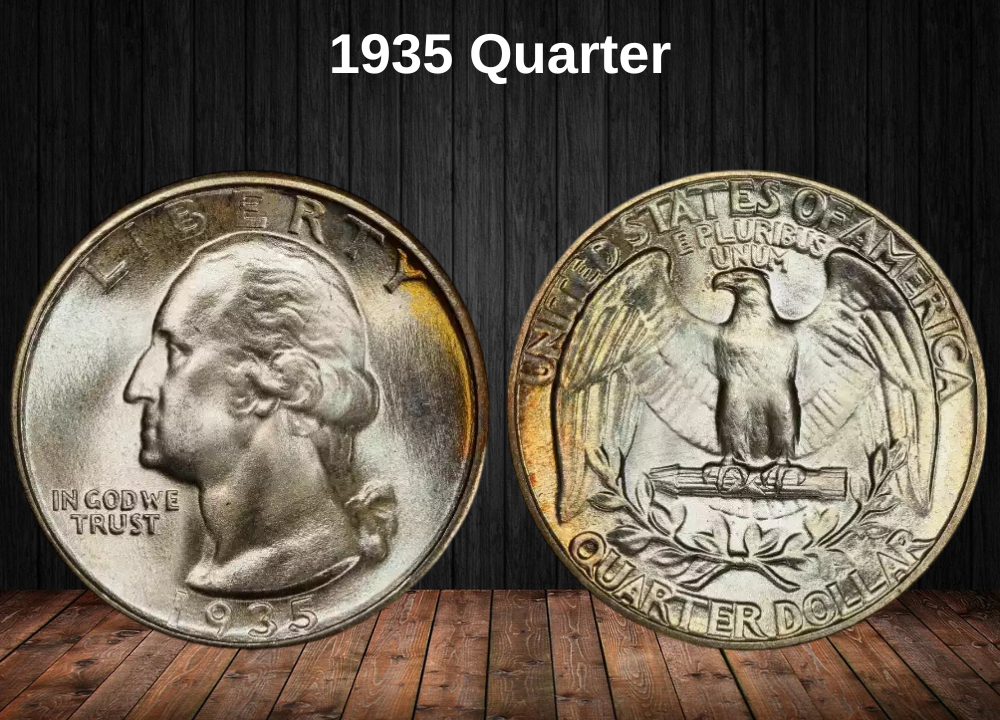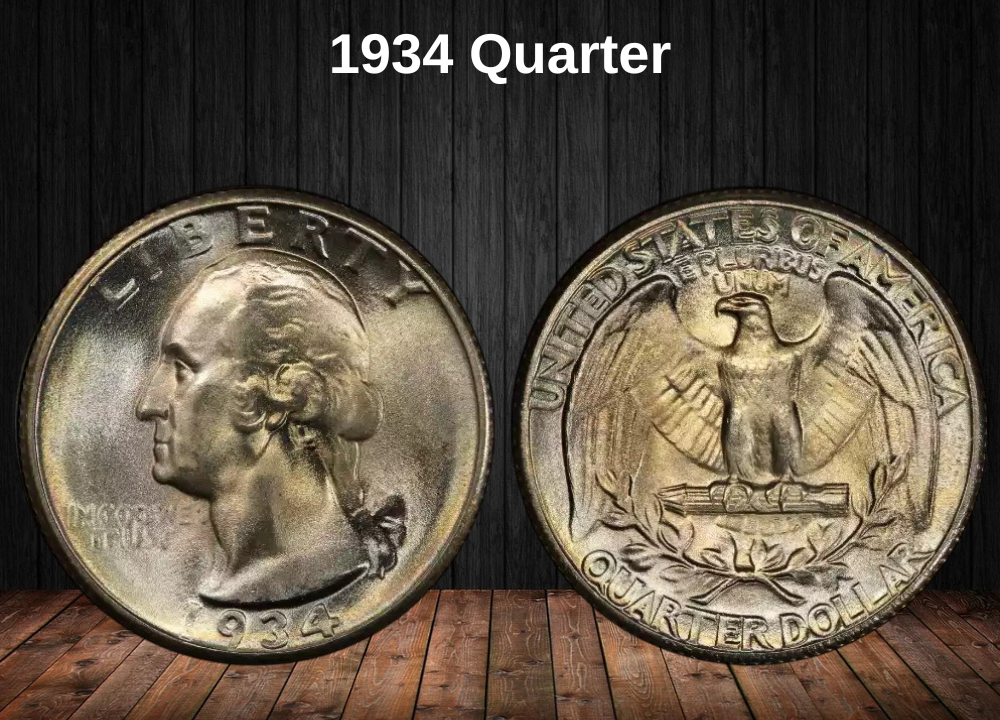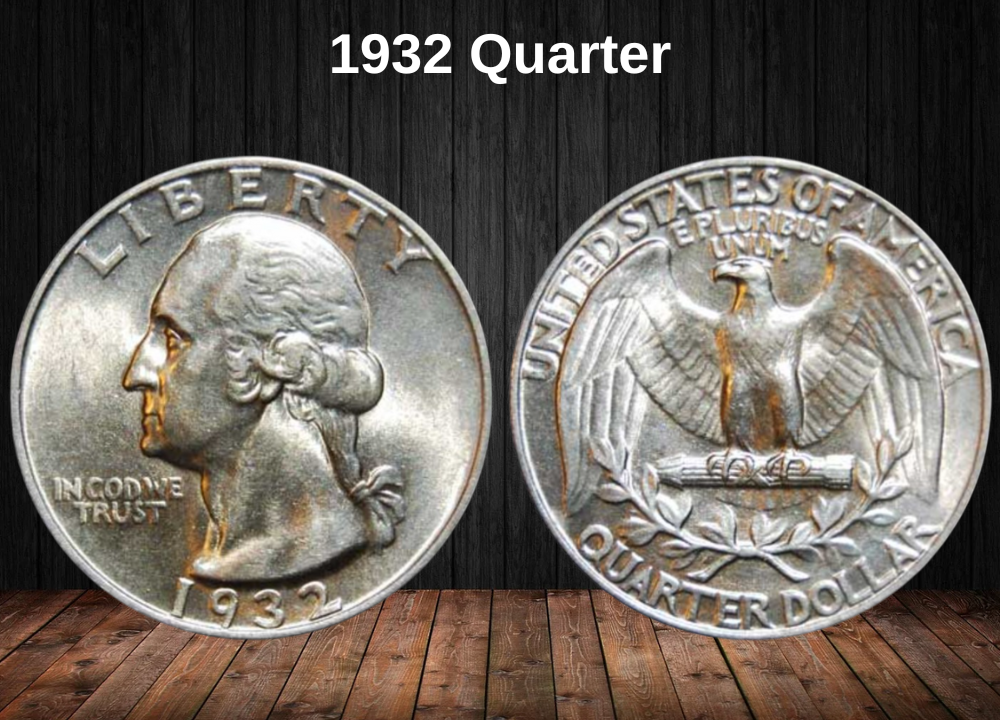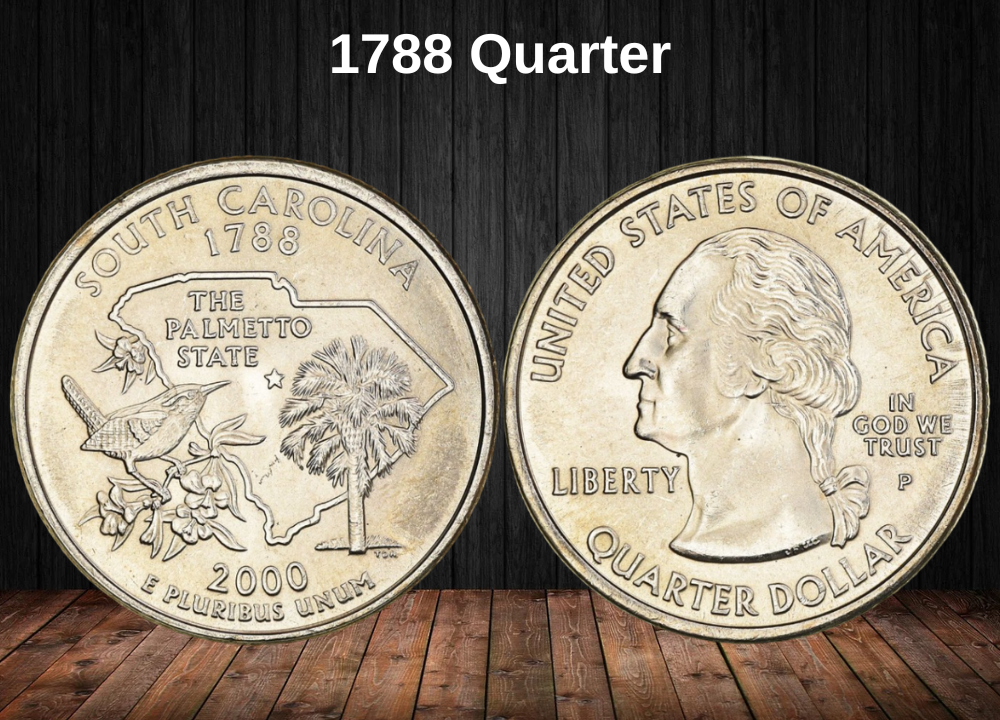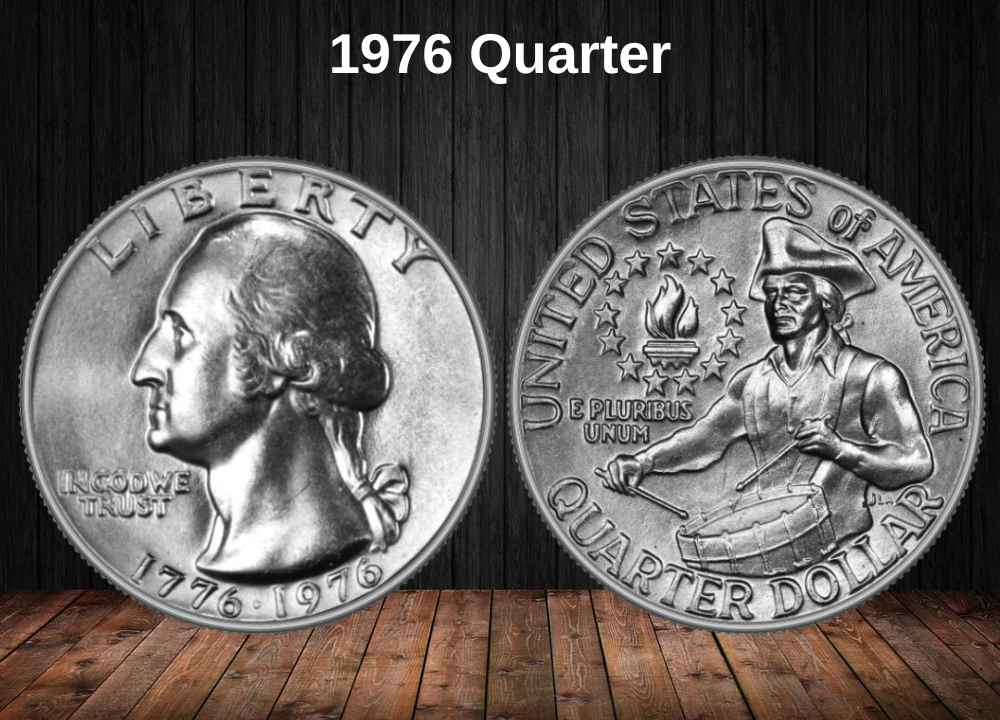The 1967 Washington Quarter was minted during one of the most turbulent moments in U.S. coinage history. By the mid-1960s, rising silver prices caused massive hoarding, pulling an estimated $460 million in coins out of circulation. To combat this crisis, the U.S. Mint eliminated silver from quarters, suspended traditional proof production, and introduced Special Mint Sets (SMS) between 1965 and 1967.
These SMS coins offered sharper details and superior finishes compared to regular circulation strikes, creating a fascinating variety of collectible options. Today, the 1967 quarter can range in value from face value in circulated grades to hundreds of dollars for rare SMS Deep Cameo examples, making it both an accessible entry point and a hidden gem for collectors.
1967 Quarter Value by Variety
| Type | Good (G4) | Fine (F12) | About Unc. (AU50) | Mint State (MS60+) | Proof (PR) |
|---|---|---|---|---|---|
| 1967 No Mint Mark Quarter Value | $0.25 | $0.29 | $0.67 | $8.67 | — |
| 1967 SMS Special Strike Quarter Value | — | — | $1.00 | $13.62 | — |
| 1967 SMS Special Strike CAM Quarter Value | — | — | — | $52.25 | — |
| 1967 SMS Special Strike DCAM Quarter Value | — | — | — | $259.57 | — |
Top 7 Most Valuable 1967 Quarters Worth Money
| Rank | Variety / Error | Description | Estimated Value |
|---|---|---|---|
| 1 | 1967 SMS Deep Cameo (DCAM) | Strong black-and-white contrast with frosted devices and mirrored fields; rare in SP68. | Up to $2,500+ |
| 2 | 1967 SMS Cameo (CAM) | Frosted portrait and eagle against reflective fields; scarcer than standard SMS. | $400 – $600 (SP67) |
| 3 | 1967 No Mint Mark MS68 | Regular strike in nearly perfect gem condition; very few exist. | $4,000+ |
| 4 | 1967 Off-Center Strike | Design misaligned on planchet; dramatic when date remains visible. | $100 – $1,000 |
| 5 | 1967 Doubled Die Obverse (DDO) | Doubling visible in “LIBERTY” and “IN GOD WE TRUST.” | $500+ |
| 6 | 1967 Wrong Planchet Error | Quarter struck on dime or cent planchet; undersized and lighter. | $1,500 – $3,000 |
| 7 | 1967 SMS in SP69 | Special Mint Set coin in near-perfect condition; rare with CAM or DCAM contrast. | Up to $4,500+ |
History of the 1967 Quarter
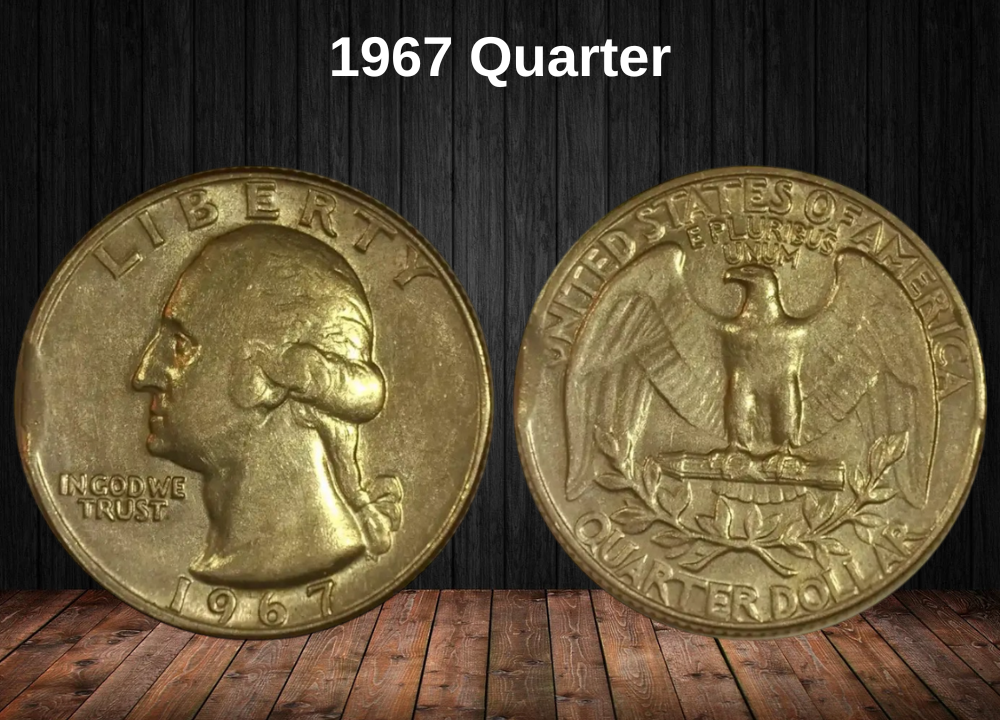
The 1967 Washington Quarter represents one of the most critical moments in U.S. coinage history. It was struck during the aftermath of the 1965 Coinage Act, which permanently removed silver from dimes and quarters and introduced the new copper-nickel clad composition that remains standard today.
By the mid-1960s, silver prices were rising so quickly that the intrinsic metal value of coins was approaching or exceeding their face value. Americans began hoarding silver dimes and quarters, pulling millions of dollars out of circulation. To stabilize the economy, President Lyndon B. Johnson announced that all future quarters and dimes would be struck without silver, beginning in 1965.
The transition was not smooth. To discourage further hoarding and speculative collecting, the Mint temporarily eliminated mint marks between 1965 and 1967, meaning every 1967 quarter appears without a mint mark regardless of where it was produced. This decision also explains why identifying the origin of 1967 quarters is impossible without Mint records.
Another major change was the suspension of traditional proof sets. Instead, collectors received Special Mint Sets (SMS) between 1965 and 1967, which offered coins of higher quality than circulation strikes but fell short of full proof standards. SMS coins introduced a new finish that could display cameo or even deep cameo contrast under ideal striking conditions.
The 1967 quarter therefore stands not just as a circulating coin, but as a symbol of adaptation during a nationwide coin shortage. It reflects the Mint’s efforts to balance economic realities, collector demand, and the introduction of modern minting technology in an era of significant monetary change.
Key Features of the 1967 Quarter
The 1967 Washington Quarter, designed by John Flanagan, carried forward the iconic design first introduced in 1932. Though the composition had changed from silver to copper-nickel clad, the visual design remained nearly identical, with symbolic imagery that honored the nation’s history and values.
The Obverse of the 1967 Quarter
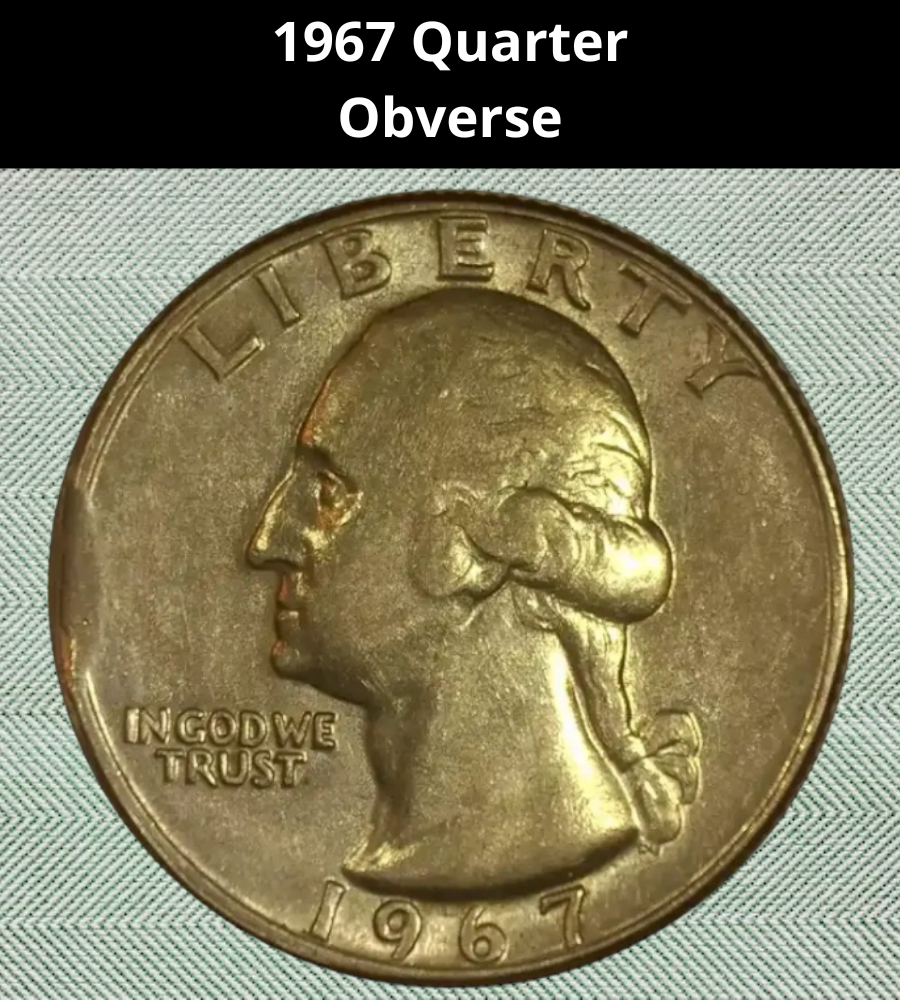
The obverse features a left-facing profile of George Washington, sculpted by John Flanagan and based on Jean-Antoine Houdon’s famous bust of the first U.S. president.
Key elements include:
- “LIBERTY” inscribed across the top rim.
- The motto “IN GOD WE TRUST” positioned to the left of Washington’s chin.
- The date 1967 at the bottom center, just beneath the neckline.
- The designer’s initials JF appear subtly at the base of Washington’s bust.
This simple but powerful design emphasized both national pride and continuity during a period of major monetary transition.
The Reverse of the 1967 Quarter
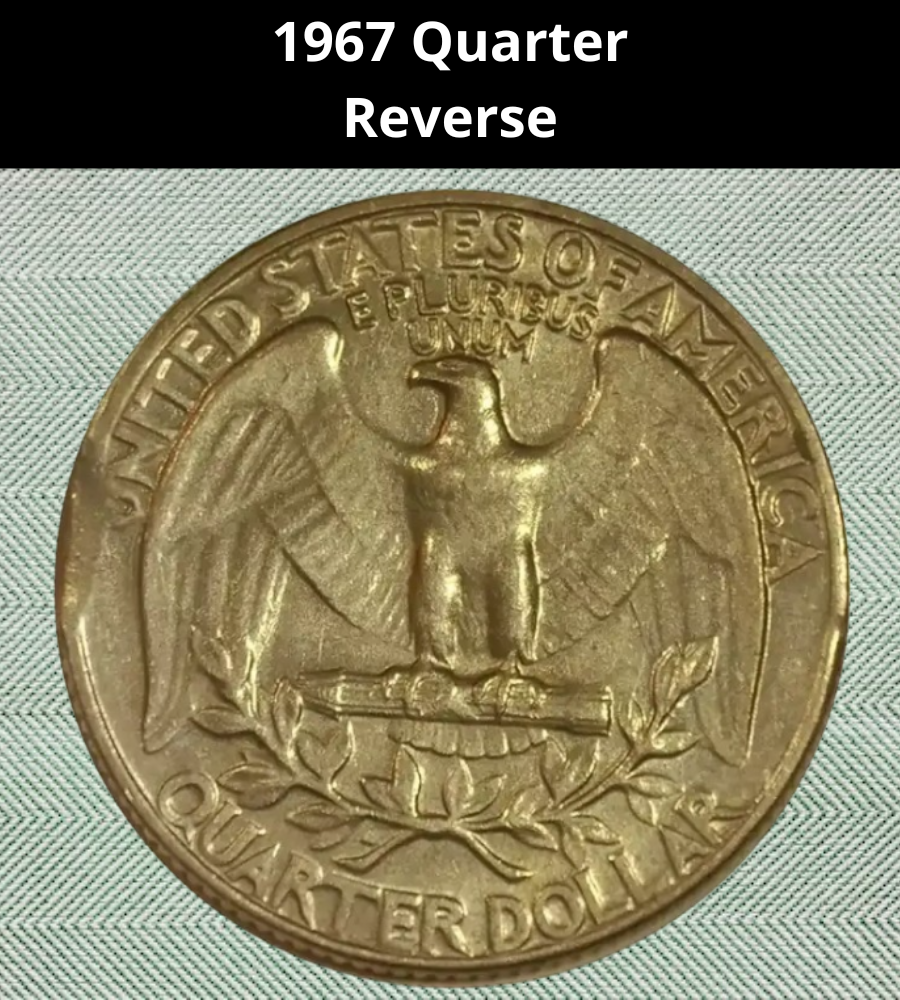
The reverse depicts a heraldic eagle with wings outstretched, perched on a bundle of arrows, symbolizing the nation’s strength and readiness to defend itself.
Design elements include:
- An olive wreath beneath the eagle, representing peace.
- The national motto “E PLURIBUS UNUM” above the eagle’s head, meaning “Out of many, one.”
- The inscription “UNITED STATES OF AMERICA” along the upper rim.
- The denomination “QUARTER DOLLAR” curved along the lower rim.
This bold and patriotic design remained standard until the State Quarters Program began in 1999.
Other Features of the 1967 Quarter
- Composition: 91.67% copper, 8.33% nickel (clad over a pure copper core).
- Weight: 5.67 grams.
- Diameter: 24.3 millimeters.
- Thickness: 1.75 millimeters.
- Edge: Reeded with 119 reeds.
- Mint Marks: None (all 1967 quarters were struck without mint marks, regardless of facility).
The lack of silver content was a historic shift, marking only the second year that U.S. quarters were struck entirely in base metals. This makes the 1967 quarter historically significant, not for rarity in circulation, but for what it represents in the evolution of U.S. coinage.
1967 Quarter Grading Guide
| Grade | Diagnostic Features | Approx. Value |
|---|---|---|
| G4 (Good) | Heavy wear; Washington’s portrait is flat; inscriptions still readable but faint. | $0.25 (face value) |
| F12 (Fine) | Moderate wear; hair outlines visible but no inner detail; eagle’s wings lack definition. | $0.29 |
| AU50 (About Unc.) | Light wear on cheek and eagle’s breast; most detail intact with traces of luster. | $0.67 |
| MS63 (Mint State) | No wear; moderate contact marks; luster present but slightly broken. | $6 – $9 |
| MS65 (Gem Uncirculated) | Sharp strike; strong luster; only a few minor marks under magnification. | $20 – $40 |
| MS67 (Superb) | Near-flawless surfaces, vibrant cartwheel luster, exceptional eye appeal. | $800 – $1,200+ |
| SMS DCAM (Deep Cameo) | Bold frosted contrast with mirrored fields; among the rarest varieties. | $200 – $450+ |
1967 Quarter Value Guides
1967 No Mint Mark Quarter Value
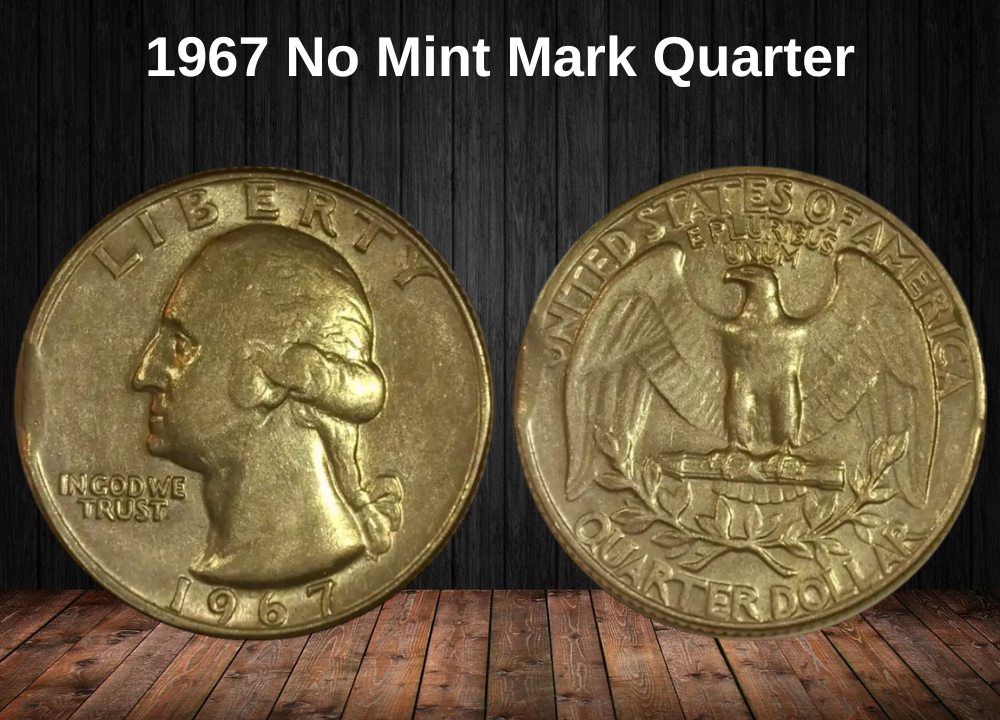
The 1967 No Mint Mark Quarter is a product of the U.S. Mint’s unique policies during the mid-1960s coin shortage. From 1965 through 1967, mint marks were deliberately omitted from all coins in order to discourage hoarding and speculation. As a result, every 1967 quarter appears without a mint mark, regardless of whether it was struck in Philadelphia or another facility.
With an enormous mintage of 821 million pieces, these clad quarters are extremely common in circulated grades and generally worth only face value. Their true appeal lies in higher-grade Mint State examples, where the difficulty of preserving pristine surfaces creates real scarcity.
In lower grades, the coin has no premium, but in MS67 and above, values climb dramatically. These superb gems are coveted by registry set collectors, as they represent the finest quality obtainable for a transitional-era clad quarter.
1967 No Mint Mark Quarter Price/Grade Chart
(Price by 1–70 Grade — Latest Auction Records Included)
| Grade | Value |
|---|---|
| G4 (Good) | $0.25 |
| F12 (Fine) | $0.29 |
| AU50 (About Uncirculated) | $0.67 |
| MS60 | $5 – $7 |
| MS63 | $8 – $10 |
| MS65 | $20 – $30 |
| MS67 | $800 – $1,200+ |
| MS68 | $3,000 – $4,000+ (extremely rare) |
1967 SMS Special Strike Quarter Value
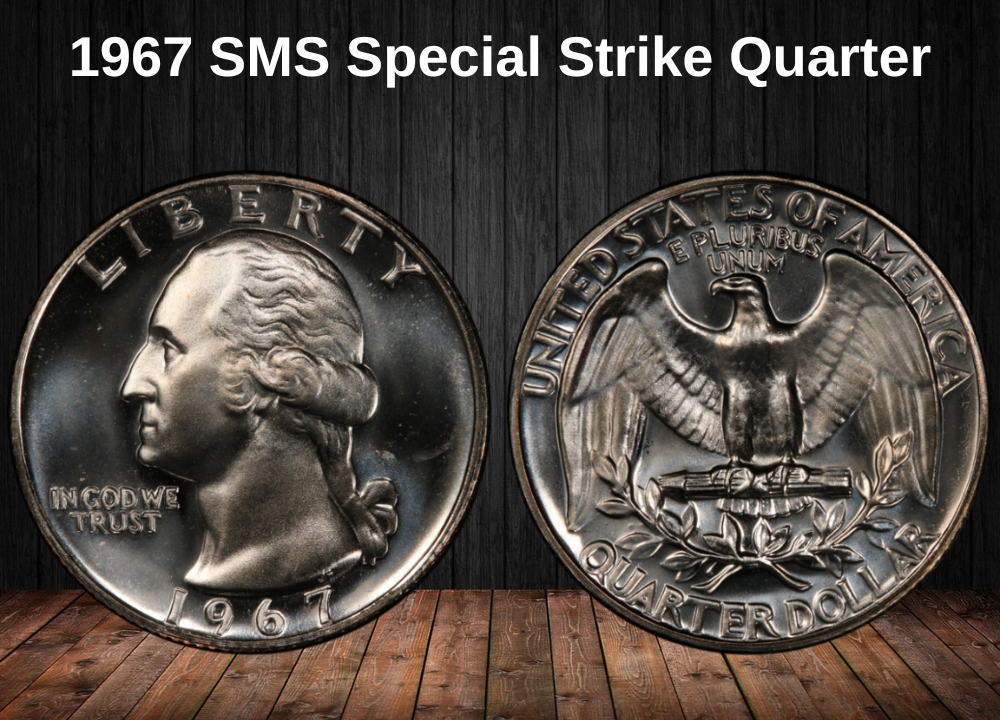
The 1967 SMS (Special Mint Set) Quarter was produced during the years when traditional proof sets were suspended (1965–1967). Instead of proofs, the Mint released Special Mint Sets to meet collector demand while focusing most of its resources on solving the nationwide coin shortage.
A total of 1,863,344 sets were issued in 1967, each containing specially struck coins with sharper details and smoother surfaces than regular circulation strikes. While not true proofs, these SMS coins were made with extra care, often displaying proof-like qualities.
The 1967 SMS Quarter is highly collectible because it bridges the gap between business strikes and full proofs. High-grade examples, particularly those showing Cameo (CAM) or Deep Cameo (DCAM) contrast, are significantly more valuable than standard strikes and remain popular among Washington quarter specialists.
1967 SMS Special Strike Quarter Price/Grade Chart
(Price by 1–70 Grade — Latest Auction Records Included)
| Grade | Value |
|---|---|
| SP60 | $5 – $7 |
| SP63 | $8 – $10 |
| SP65 | $12 – $16 |
| SP67 | $18 – $25 |
| SP68 | $30 – $50 |
| SP69 | $80 – $120+ |
1967 SMS Special Strike CAM Quarter Value
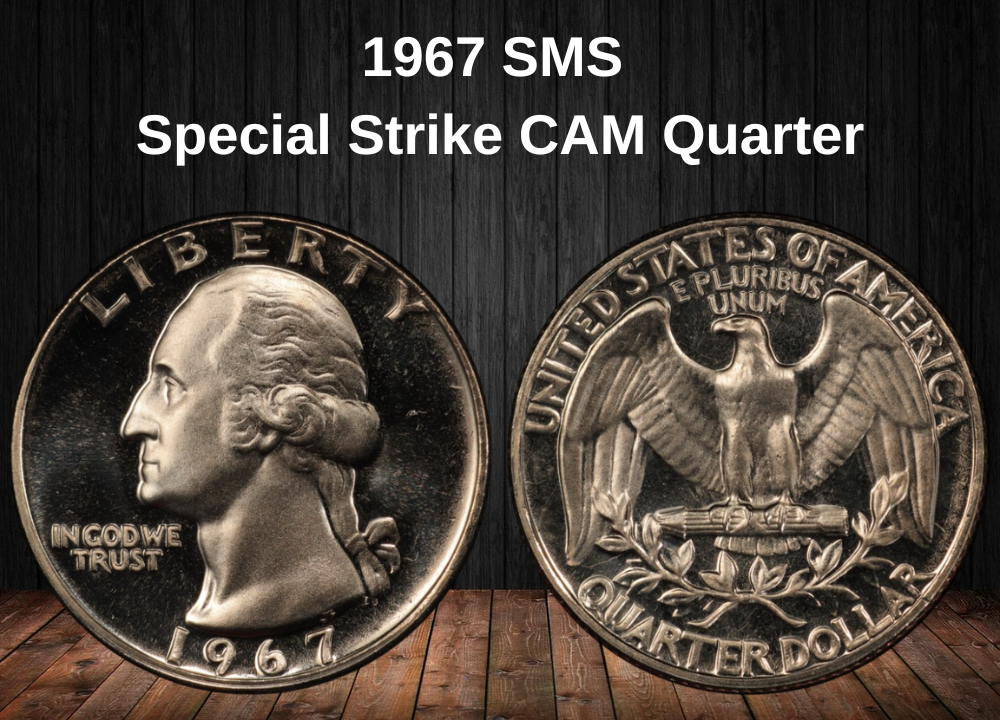
The 1967 SMS CAM Quarter represents one of the most visually appealing varieties of the Special Mint Set program. These coins display the sought-after cameo contrast, where frosted design elements such as Washington’s portrait and the eagle on the reverse stand out against reflective, mirror-like fields.
Only a small fraction of 1967 SMS quarters achieved this sharp cameo effect, since it required perfectly prepared dies and clean planchets. As a result, certified CAM examples are considerably scarcer than standard SMS issues and command strong premiums in higher grades.
Collectors prize the 1967 SMS CAM Quarter not only for its striking eye appeal, but also for its role as a transitional coin, produced during a time when traditional proofs were unavailable. This makes it a centerpiece for anyone building a mid-1960s Washington quarter collection.
1967 SMS Special Strike CAM Quarter Price/Grade Chart
(Price by 1–70 Grade — Latest Auction Records Included)
| Grade | Value |
|---|---|
| SP60 | $20 – $25 |
| SP63 | $30 – $40 |
| SP65 | $60 – $80 |
| SP67 | $120 – $175 |
| SP68 | $200 – $275 |
| SP69 | $400 – $550+ |
1967 SMS Special Strike DCAM Quarter Value
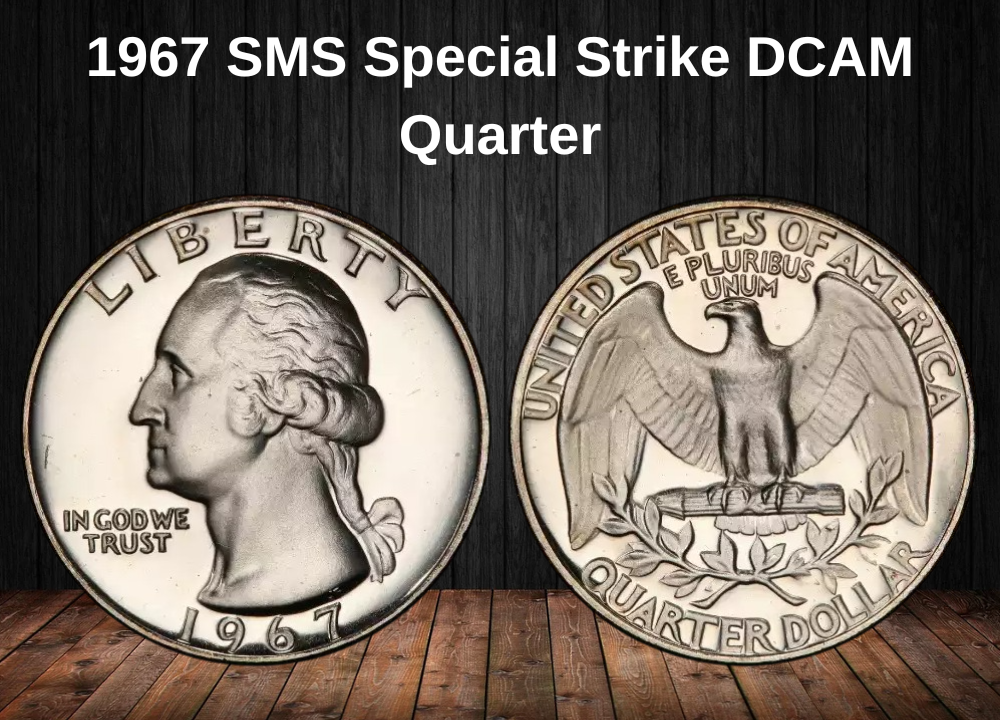
The 1967 SMS DCAM Quarter is the ultimate prize among the Special Mint Set issues, showcasing the bold Deep Cameo contrast that collectors treasure. These coins feature frosted devices with intense, icy texture that appear to float above jet-black mirrored fields, creating the dramatic “black-and-white” effect usually associated with the finest proof coins.
Only a very small percentage of the 1967 SMS production achieved true DCAM status. Achieving this designation required perfectly polished dies, pristine planchets, and precise striking conditions—factors rarely aligned during this transitional period. As a result, certified DCAM specimens are exceptionally scarce and bring strong premiums at auction.
For collectors, the 1967 SMS DCAM Quarter represents not only top-end technical quality but also the historical importance of the proof suspension years (1965–1967). It stands as the crown jewel of the series, sought after by registry set builders and advanced numismatists alike.
1967 SMS Special Strike DCAM Quarter Price/Grade Chart
(Price by 1–70 Grade — Latest Auction Records Included)
| Grade | Value |
|---|---|
| SP60 | $100 – $150 |
| SP63 | $180 – $225 |
| SP65 | $250 – $325 |
| SP67 | $400 – $550 |
| SP68 | $700 – $900 |
| SP69 | $1,500 – $2,000+ |
Rare 1967 Quarter Errors List
1. 1967 SMS DDR FS-801
The 1967 SMS Doubled Die Reverse (DDR) FS-801 is one of the most dramatic and desirable errors of the Special Mint Set era. This variety shows clear doubling on the reverse inscriptions, most notably in “UNITED STATES OF AMERICA” and “QUARTER DOLLAR.” The spread often appears as a shadow-like doubling along the letters, visible even under modest magnification.
What makes this variety particularly fascinating is its appearance in the Special Mint Set (SMS) coins—a series already notable for superior strike quality compared to business strikes. The presence of such a bold error in a premium-struck coin makes the DDR FS-801 stand out, blending the rarity of a minting mistake with the sharp surfaces of SMS production.
Collectors often note that the doubling also enhances parts of the eagle’s wing feathers, giving the reverse design an unusually “thickened” look. This adds to the visual appeal and makes the error easier to identify for sharp-eyed numismatists.
Because of its combination of rarity, strong eye appeal, and its place in SMS history, the 1967 DDR FS-801 commands solid premiums in the marketplace. Higher-grade examples with full SMS quality surfaces and strong doubling are especially coveted, with auction records showing consistent demand from advanced error collectors.
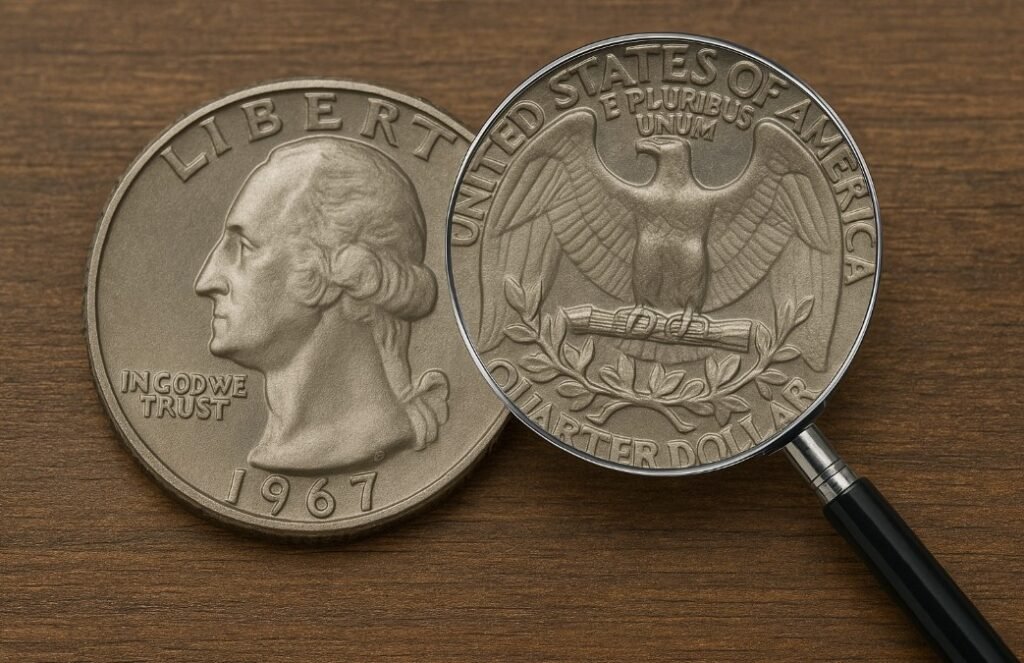
1967 SMS DDR FS-801 Price/Grade Chart
(Price by 1–70 Grade — Latest Auction Records Included)
| Grade | Value |
|---|---|
| SP60 | $75 – $120 |
| SP63 | $150 – $225 |
| SP65 | $300 – $450 |
| SP67 | $600 – $850 |
| SP68 | $1,000 – $1,400+ |
2. 1967 SMS DDO FS-101
The 1967 SMS Doubled Die Obverse (DDO) FS-101 is among the most striking varieties from the Special Mint Set era. This error is identified by noticeable doubling on the obverse inscriptions, most prominently in “LIBERTY” and “IN GOD WE TRUST.” Collectors also report minor doubling visible in Washington’s profile details, such as the hair above the ear and the bridge of the nose.
Unlike machine or strike doubling, which produces flat and shelf-like distortions, the FS-101 variety shows true hub doubling with well-defined separation between doubled elements. This makes authentication straightforward for experienced collectors, and it remains one of the most visually appealing doubled dies of the late 1960s.
The rarity of the FS-101 is amplified by the fact that it appears on Special Mint Set coins, which were struck with higher quality control than circulation strikes. Finding such a bold error on an SMS coin creates a fascinating contrast: a premium-quality strike paired with one of the most desirable minting mistakes.
Well-preserved specimens with cameo or deep cameo contrast are especially prized, as the frosted devices can make the doubling “pop” even more dramatically against mirrored fields. As a result, auction prices for top-grade examples can be surprisingly strong.
1967 SMS DDO FS-101 Price/Grade Chart
(Price by 1–70 Grade — Latest Auction Records Included)
| Grade | Value |
|---|---|
| SP60 | $100 – $150 |
| SP63 | $200 – $325 |
| SP65 | $400 – $650 |
| SP67 | $800 – $1,200 |
| SP68 | $1,600 – $2,200+ |
Where to Sell Your Quarter Coin?
Now that you know the value of your quarter, the next step is deciding where to sell it. There are several trusted options—both online and in person—that can help you get the best price depending on your coin’s rarity and condition.
To see the full list of recommended places, along with their advantages and disadvantages, check our complete guide on where to sell your quarter coins.
FAQ About The 1967 Quarter
1) What is the composition of the 1967 quarter?
- Outer layers: 75% copper, 25% nickel
- Core: pure copper
- Weight: 5.67 g
- Diameter: 24.3 mm
- Edge: Reeded with exposed copper core
2) Why is the 1967 quarter historically significant?
It comes from the height of the U.S. coin shortage. To discourage hoarding, the Mint:
- Removed mintmarks (1965–1967)
- Suspended Proof Sets, replacing them with Special Mint Sets (SMS)
This makes 1967 quarters a product of one of the most unusual minting periods in U.S. history.
3) How many 1967 quarters were minted?
- Business strikes (no mintmark): 1,524,031,848
- Special Mint Set (SMS): 1,863,344
4) Are 1967 quarters rare?
- Circulated pieces: Very common.
- MS-67+ business strikes: Scarce due to heavy production and handling.
- SMS coins with strong Cameo or Deep Cameo contrast: Condition rarities, highly collectible.
5) What is the value of a 1967 quarter?
- Circulated: 25¢ (face value)
- MS-65: $8–15
- MS-67: $150–300+
- SMS PR-65: $5–10
- SMS PR-68 Cameo/DCAM: $500–1,500+
6) What varieties or errors should I look for?
- Doubled dies (DDO/DDR): Minor, but collectible.
- Clad planchet errors: Off-center strikes, broadstrikes, clipped planchets.
- Wrong planchets: Rare quarters struck on dime or nickel stock.
- SMS Cameo/DCAM coins: Scarce due to limited frosted die preparation.
7) How can you tell an SMS 1967 quarter from a circulation strike?
- SMS coins show sharper strikes, smoother surfaces, and may have semi-prooflike fields.
- SMS sets were issued only to collectors and not released into circulation.
- Cameo SMS examples show frosted devices with mirrored backgrounds.
8) Why do collectors value the 1967 quarter?
- It marks the third and final year of the Mint’s no-mintmark, no-proof experiment.
- SMS issues provide challenging Cameo/DCAM hunting.
- Registry set competition makes high-grade coins desirable.
- It’s part of the story of America’s transition from silver to clad coinage.

